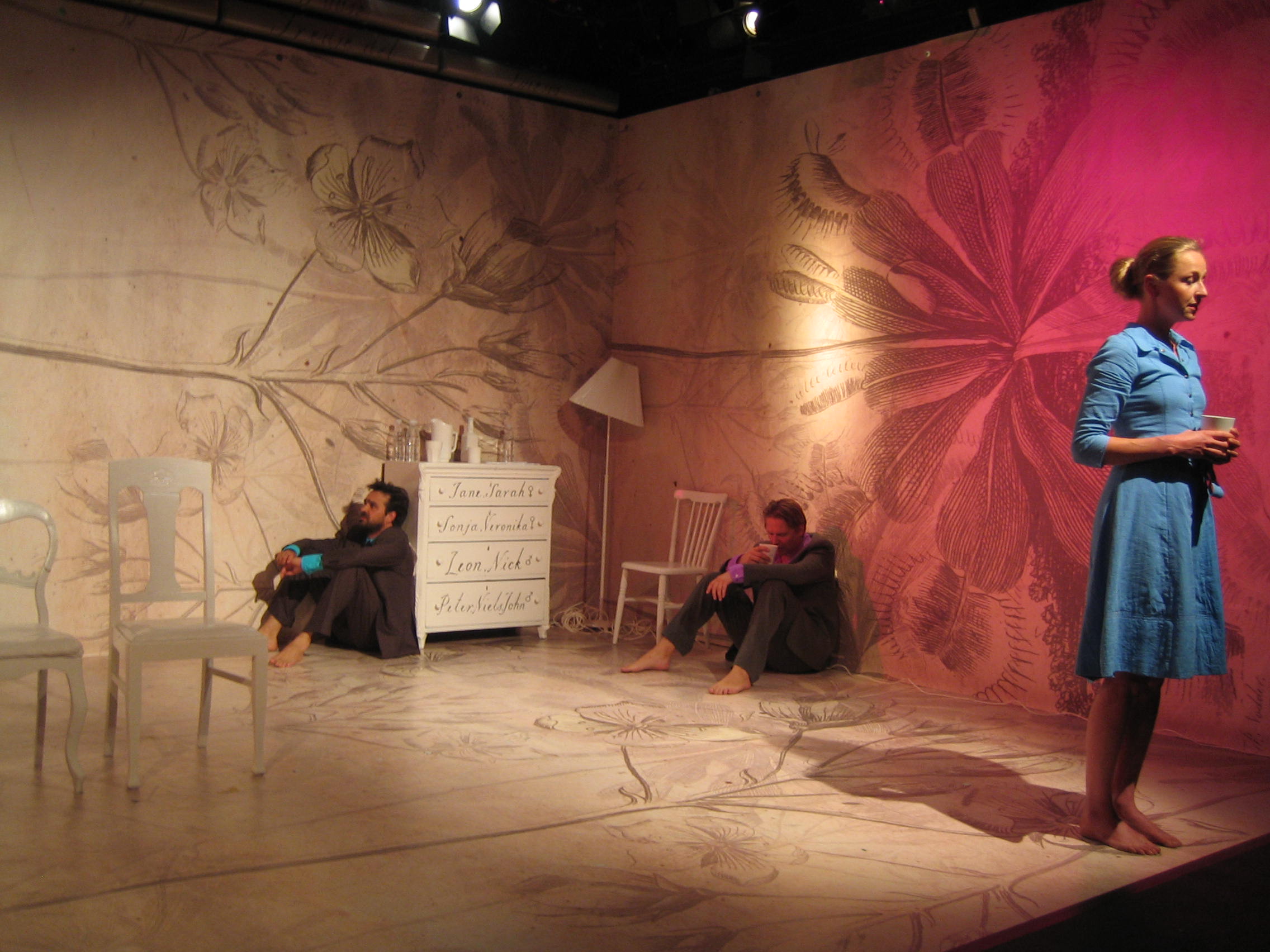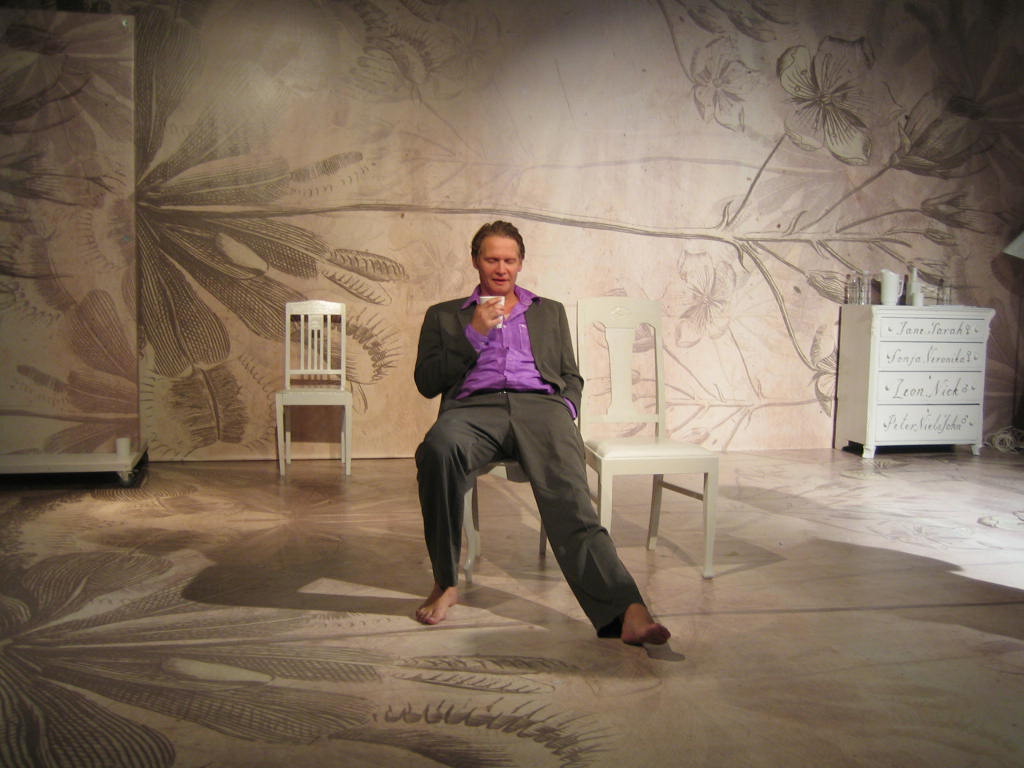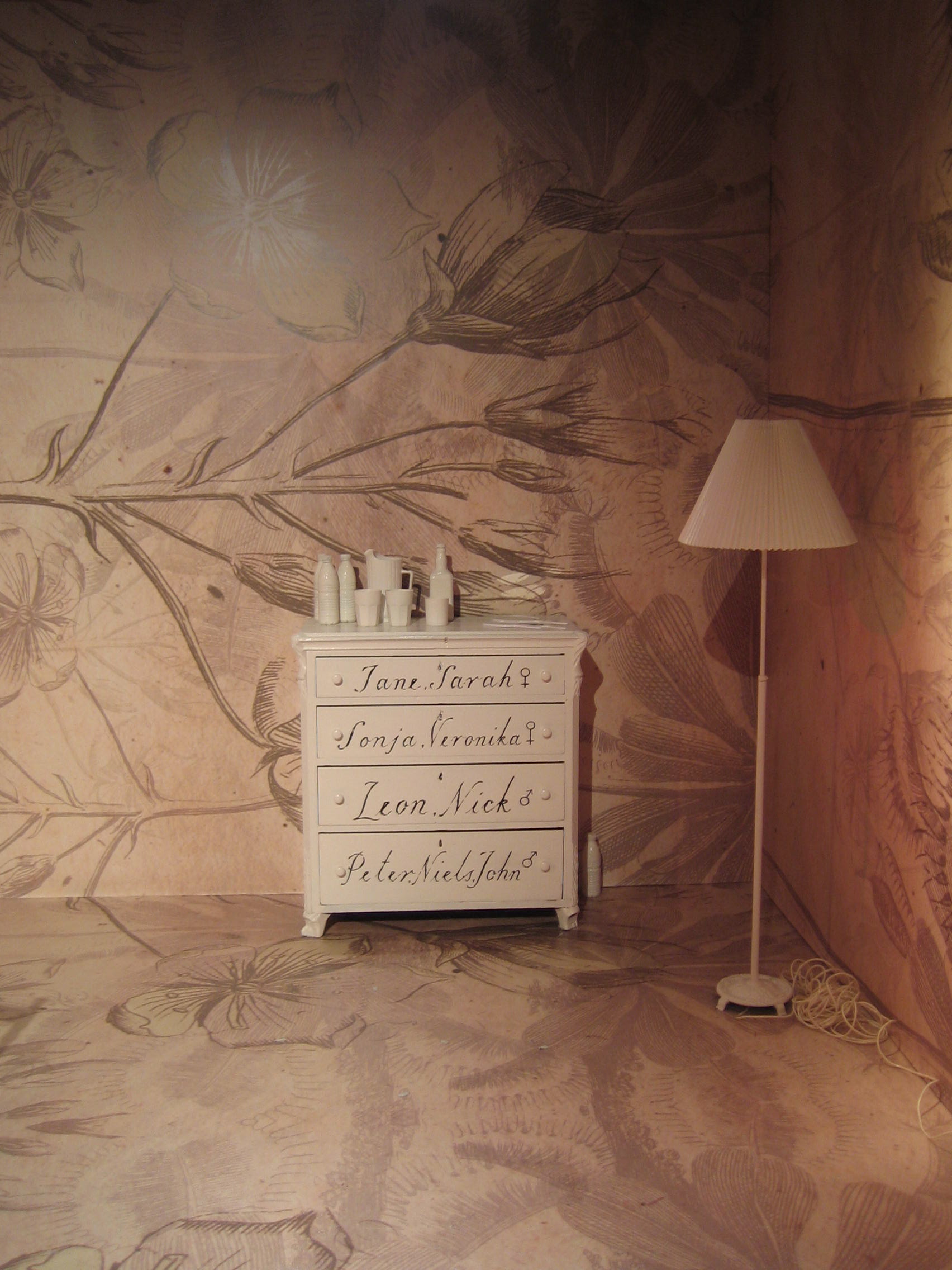Jessica Grindstaff is the Set Designer for Phantom Limb Company. She consistently works closely with an architect on all of her projects, taking a fine art approach and craving the engineering, holistic long view and ultimately grounding brain that an architect can provide. Learning from and inspiring each other, Jessica has an on-going collaboration with Wheelwright Prize winning architect Gia Wolff. Typically all sets that are used in Phantom Limb productions are also "alive" and considered puppets, most often even pulled by strings.
MEMORY RINGS
Memory Rings is a minimalist design comprised of three elements: a tree, a rolling platform and a table and chairs.
As the audience enters, they see a pool of light highlighting a circle of hanging ropes and pulleys and sandbags. On stage right are set pieces of the tree in a heap with a sleeping Stag laying next to it and upstage left there is another pool of light with 4 dead-hung puppets. As the show progresses performers clad in animal masks enter to construct the tree before the audience’s eyes. The rotating platform carries the narrative of the family. It is designed to look like a cross section taken from a tree.
Over 10,000 newspapers were used to create the paper surface of the tree, re-pulped and formed into handmade sheets of 4’x2’ paper with a lunar surface or that of a paper wasps nest. Each part of the tree was comprised of a wooden and mesh armature and the paper was sculpted on the form to closely resemble the actual shape of the Methuselah tree.
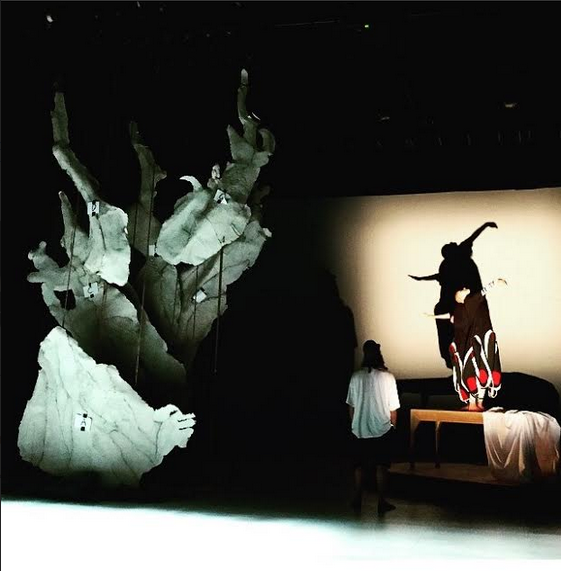
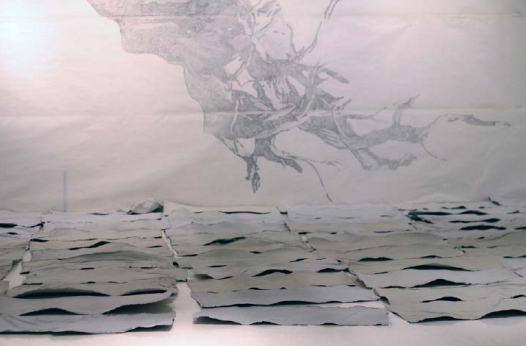
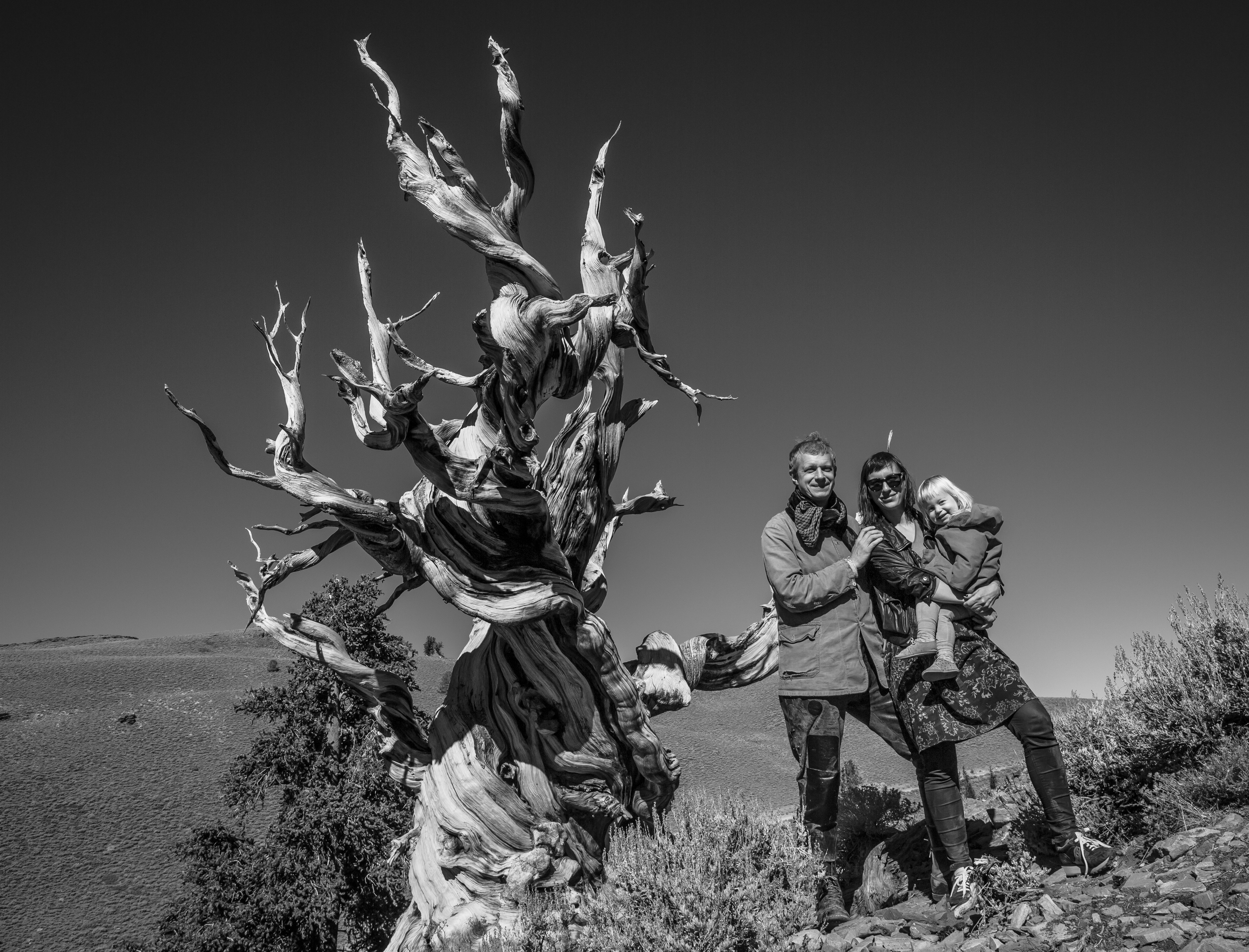
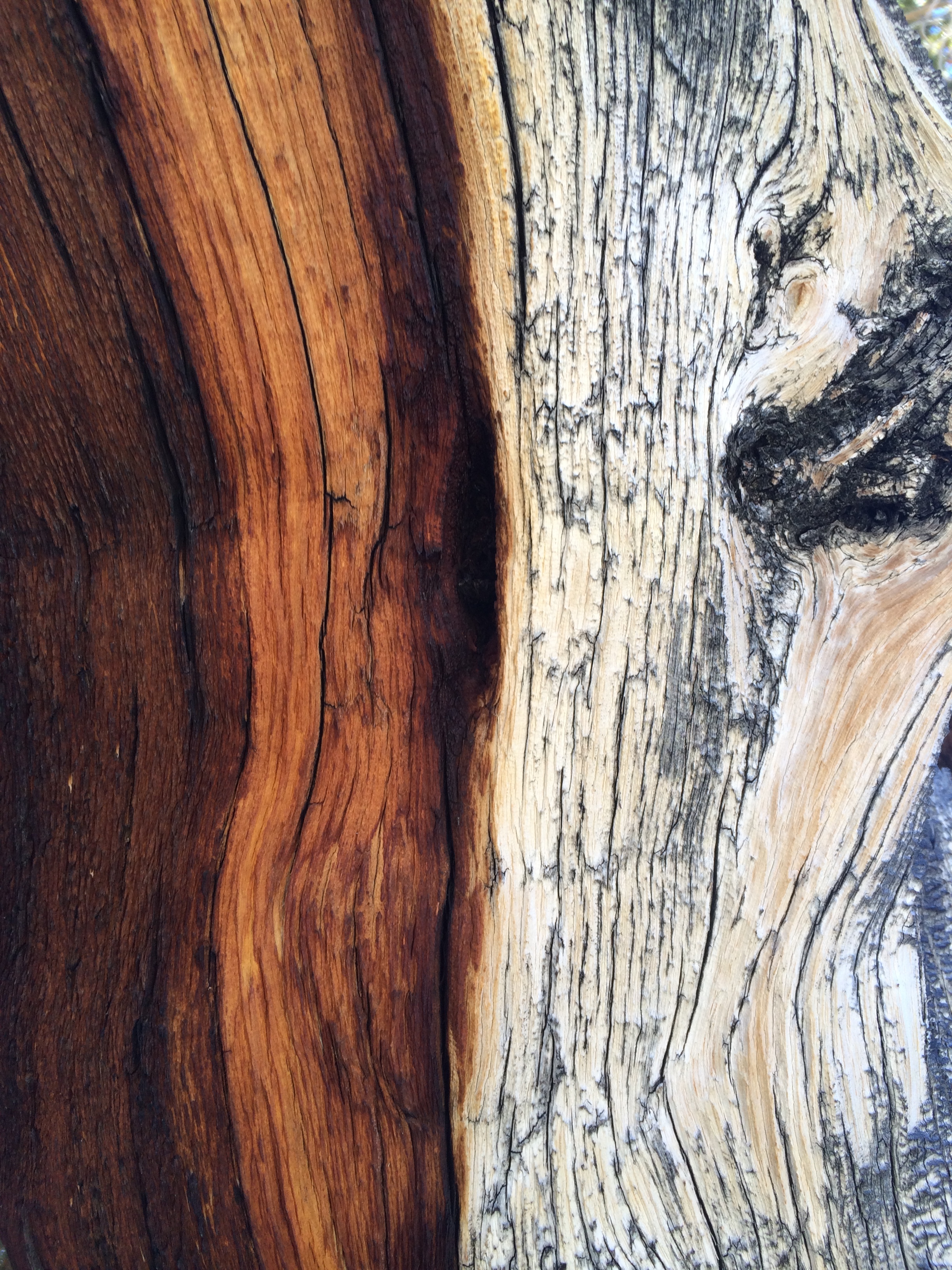
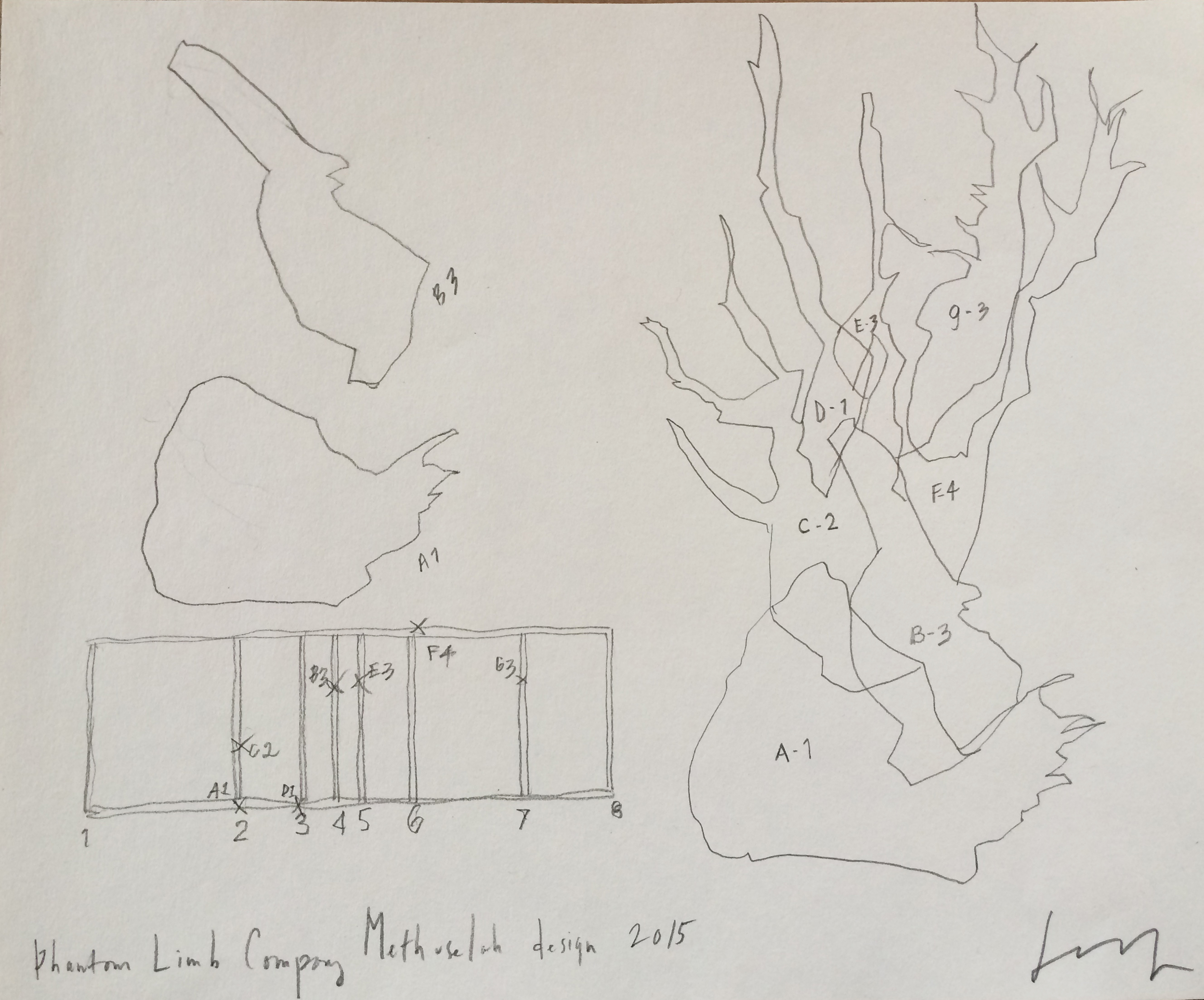

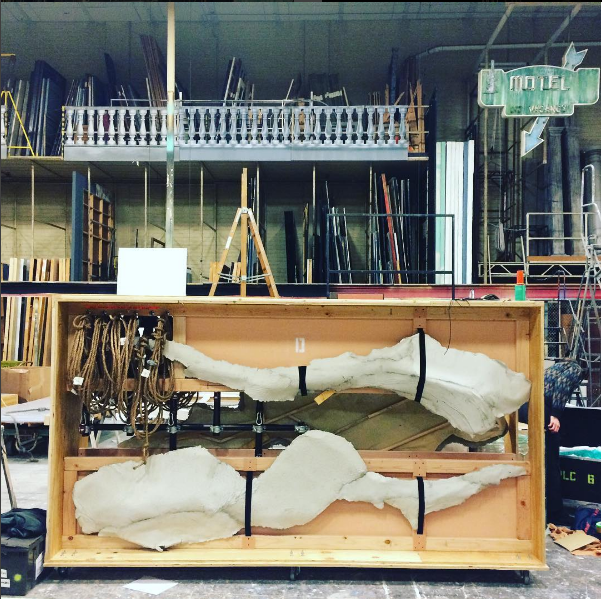
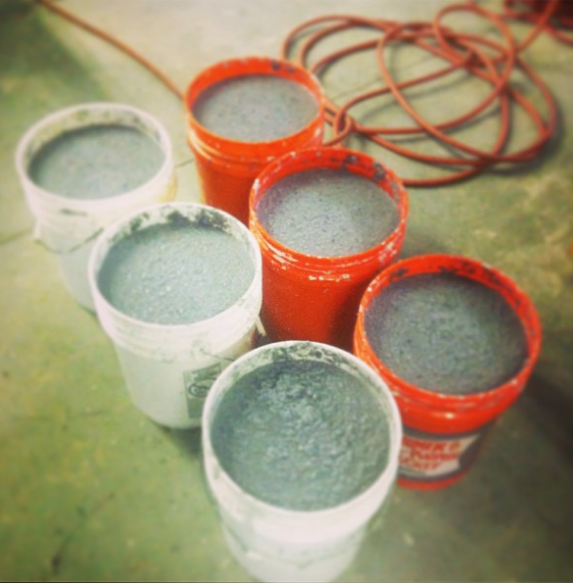
69˚S.
For 69˚S. Jessica created 3 large-scale icebergs that were designed around the concept of a 3D topographical map. Ernest Shackleton set out to be the first to cross the continent of Antarctica, mapping being an integral part of the expedition. The icebergs were made from a recyclable Tyvek and were lit from within.
At the top of the show they began on the floor each with a single red rope attached to the apex. As the story is summoned, they very slowly rise up and remain standing until the climactic scene at the end where they make a final descent or “melting”.
In conjunction with architect Selin Maner and the Grand Theatre Groningen, Jessica designed an 18’ boat that was inspired by the boat building process as well as the skeleton of a whale, oddly very similar to one another. Maner made beautiful drawings to kick off this design process. The final piece consisted of a series of ribs and three masts. At the climactic moment of the ship being crushed by the ice, the ship - ultimately a giant puppet - collapsed in 3 stages all from engineered motors controlling this movement.
Please visit the archive of Phantom Limb's blog to see their research trip to Antarctica.
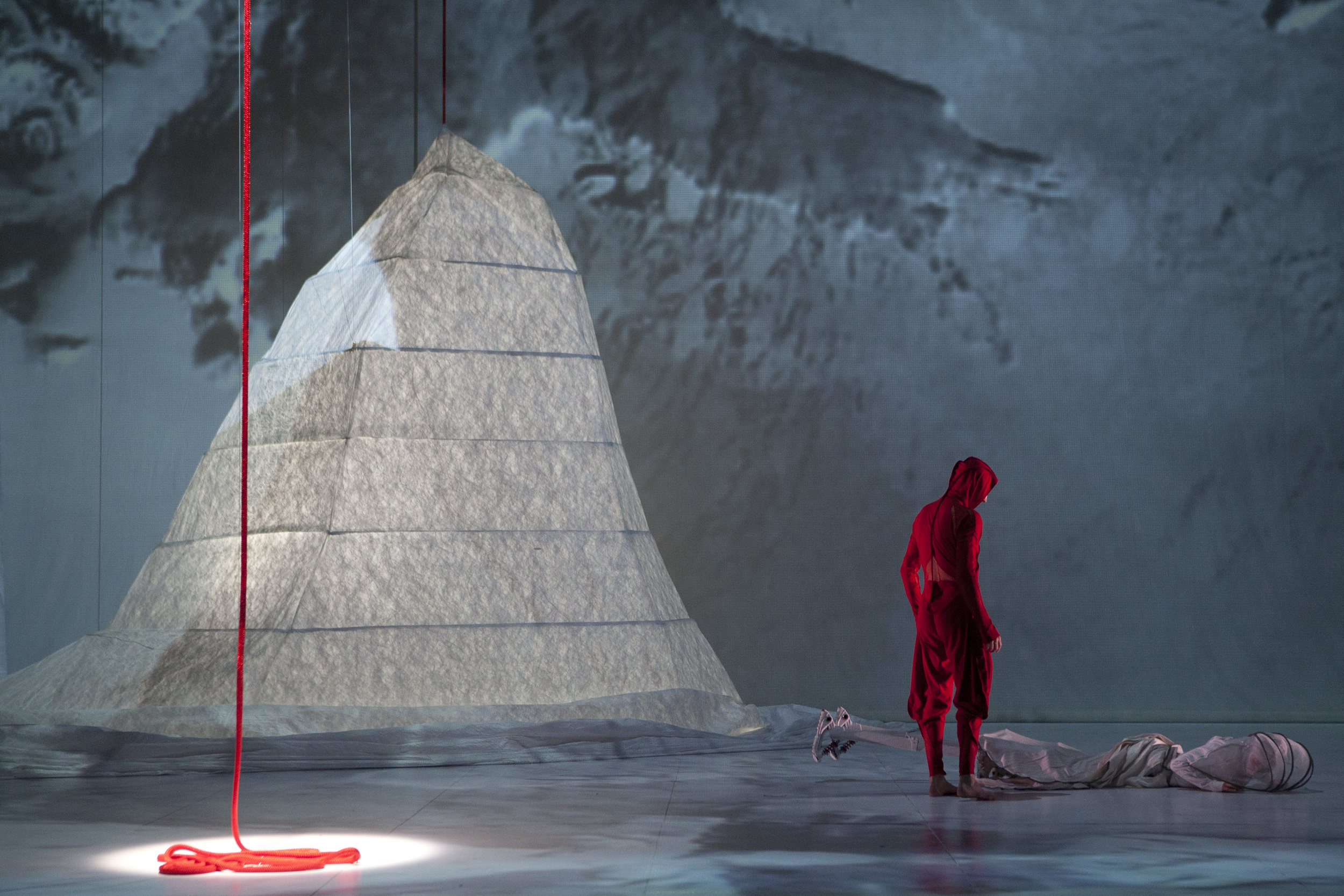


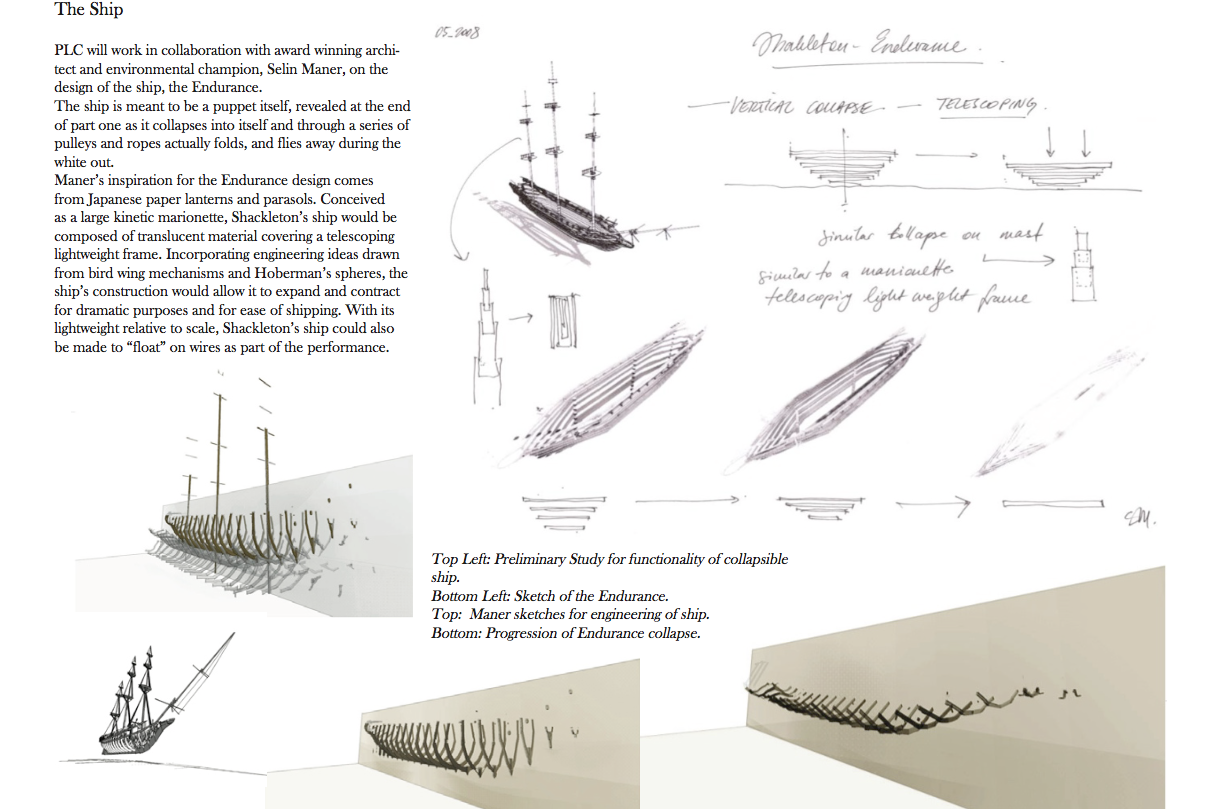
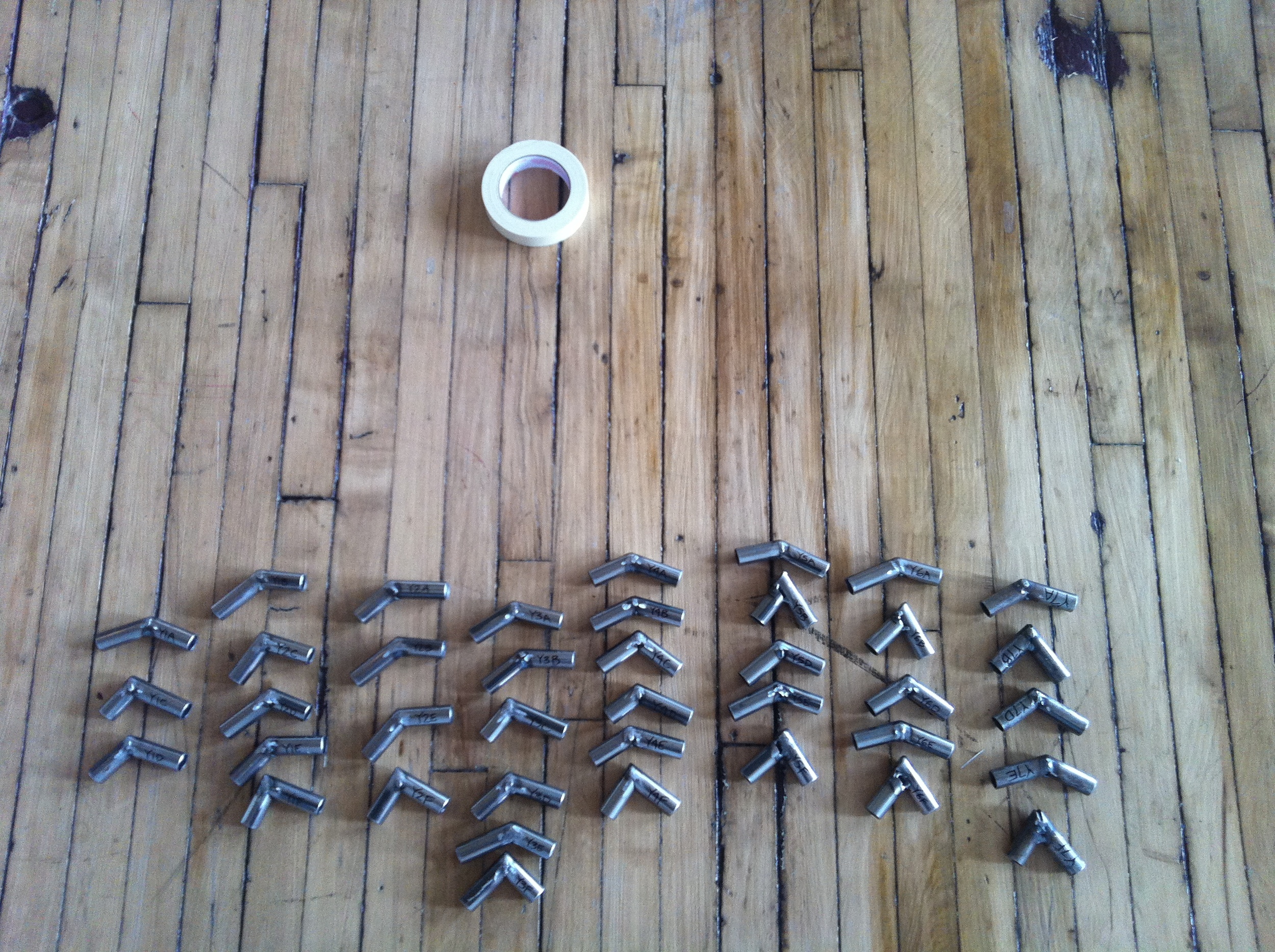
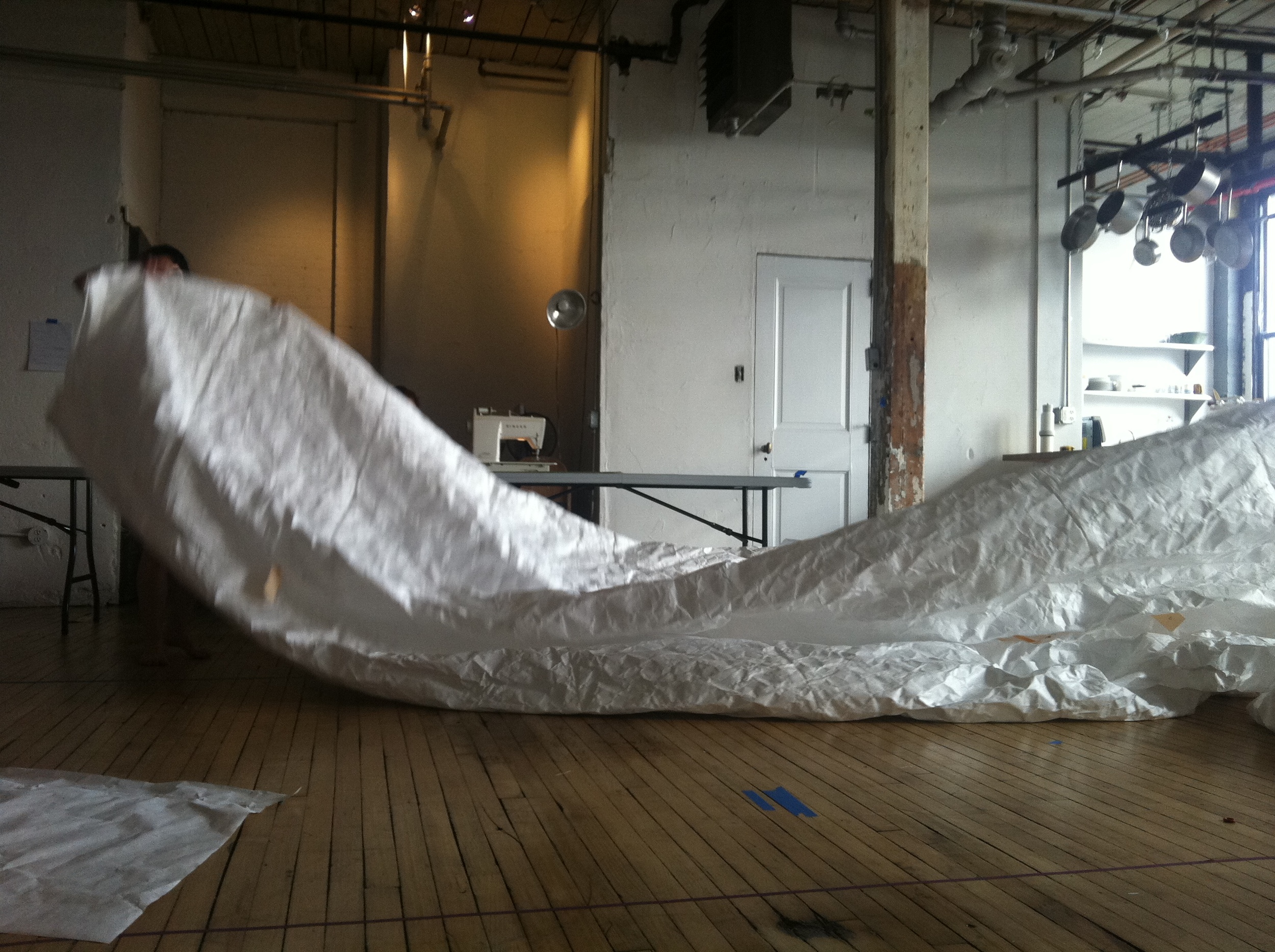
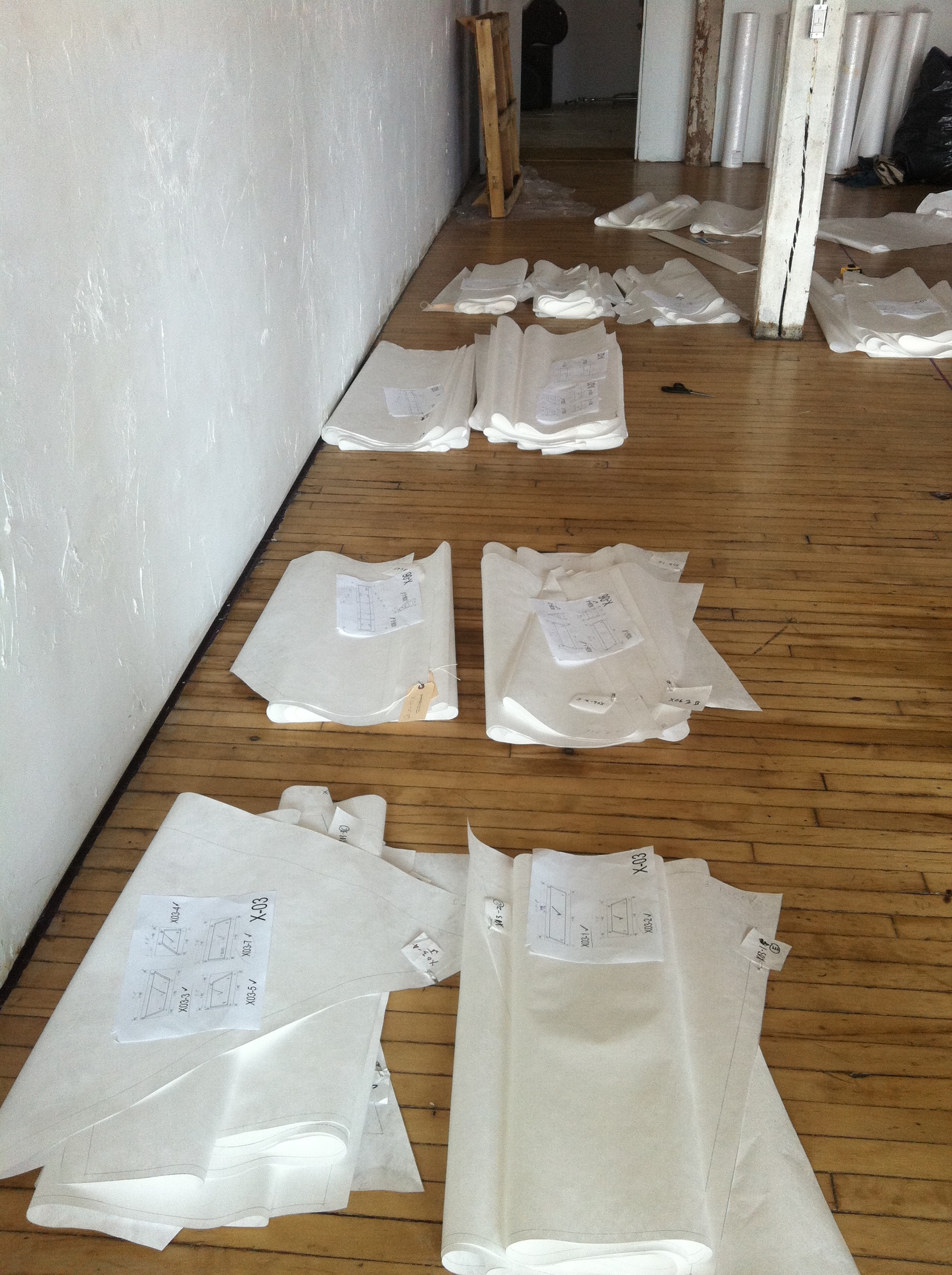
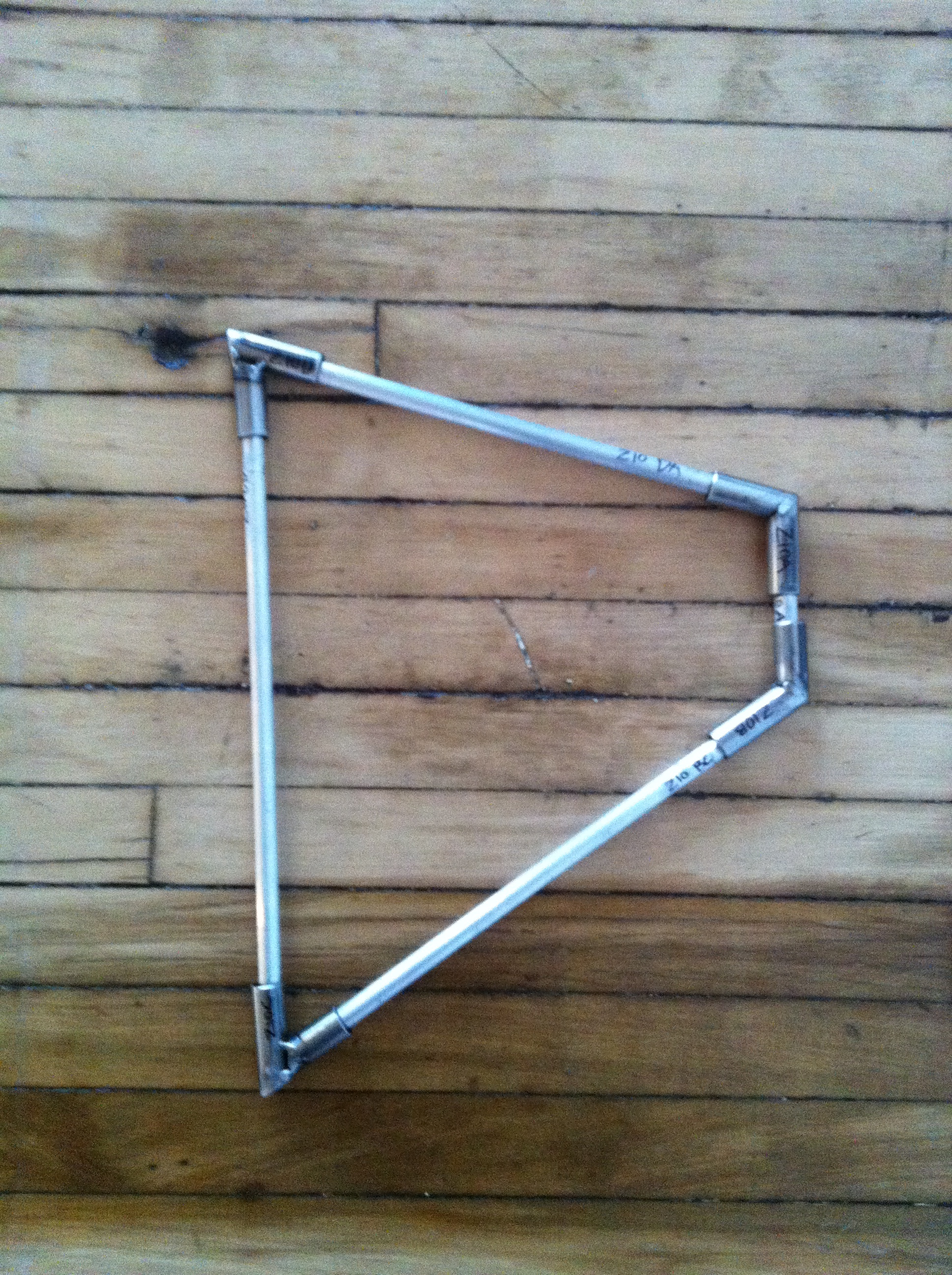
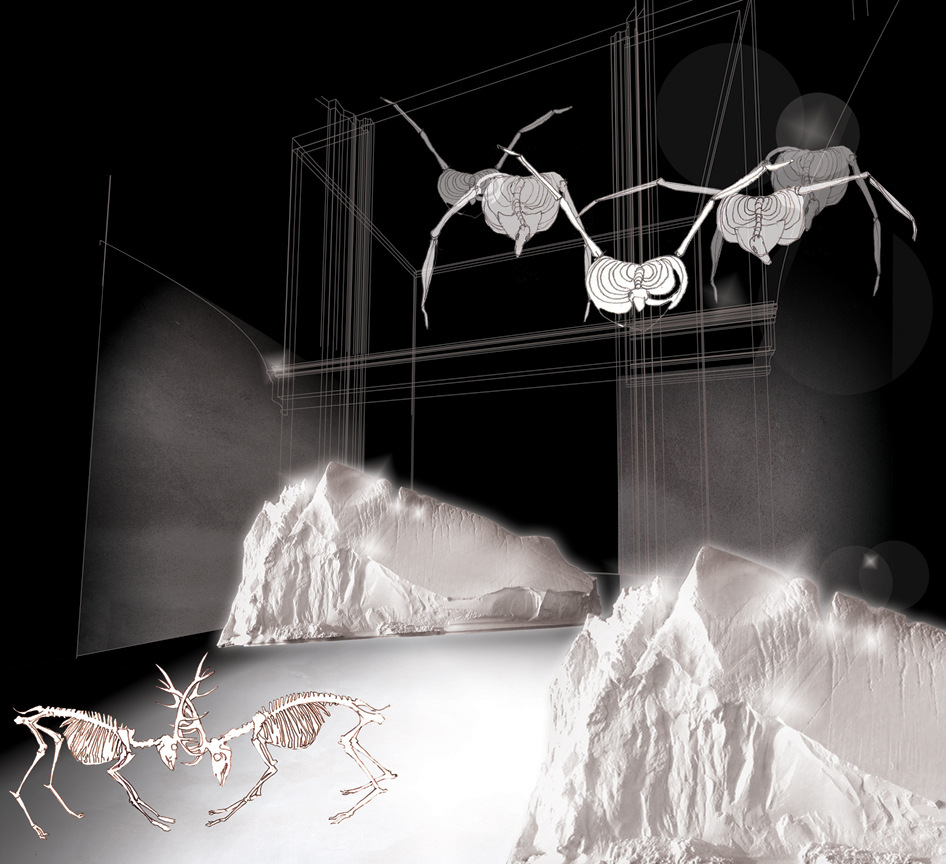

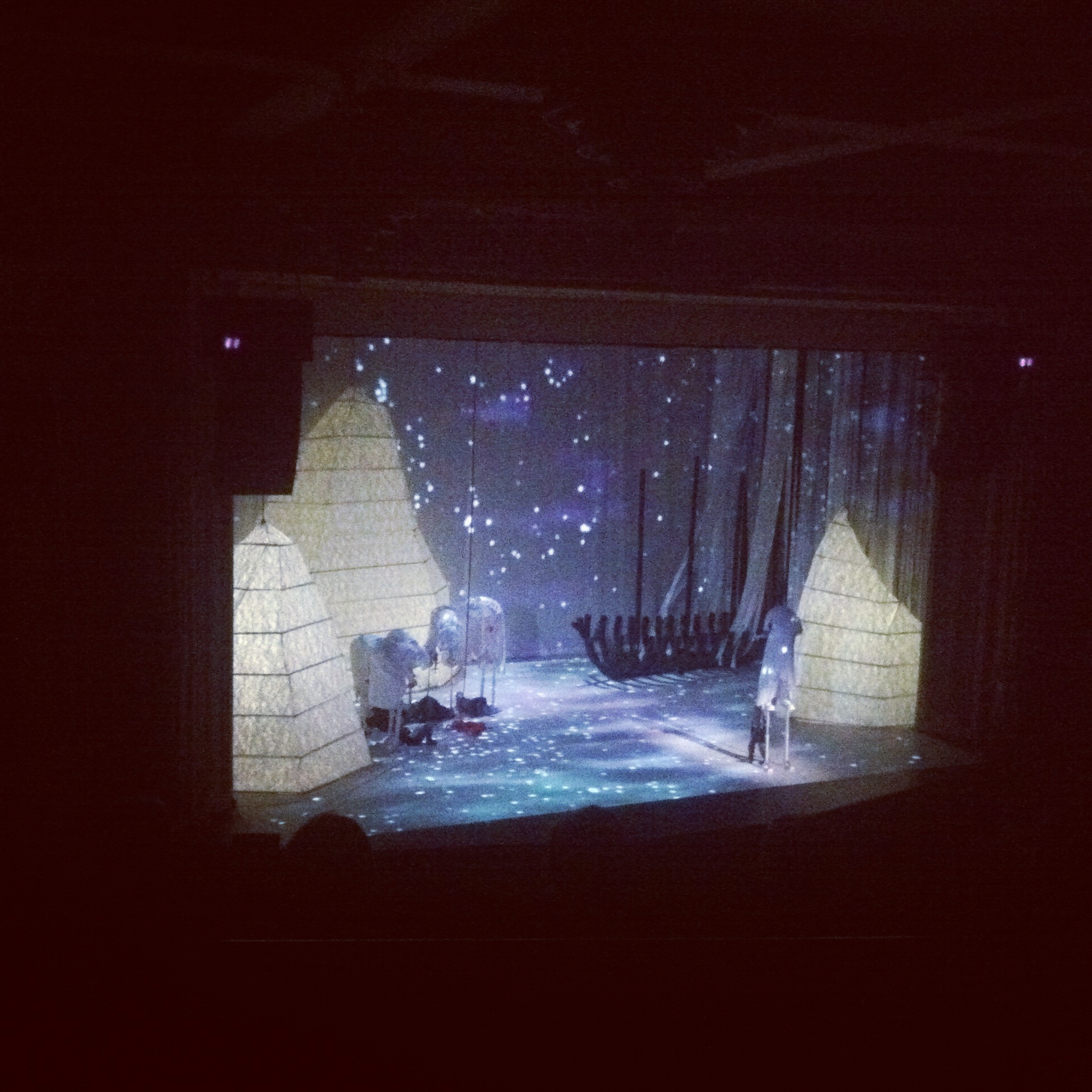
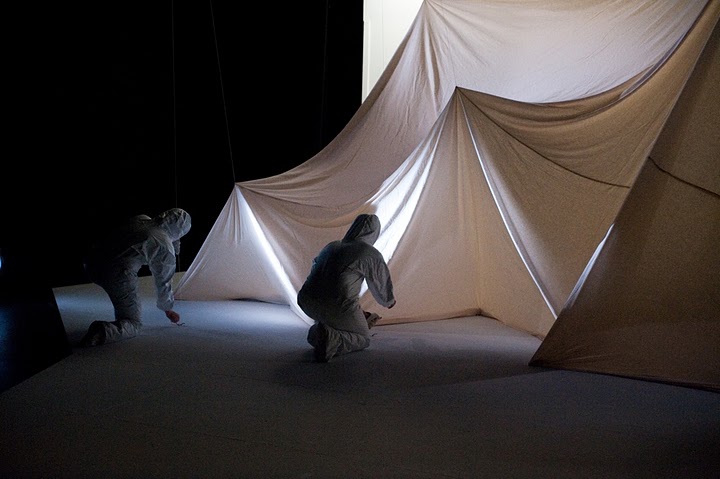
PEER GYNT
Peer Gynt is a large scale rotating diorama with a forest channel in center. The sets for Peer Gynt consisted of a 2-sided rotating turntable. On one full side was a dining room where the play began. A large banquet was set. On one side, the table was filled with bounty and rich color. The other side remained empty and a space of squalor. The entire set had an ombre effect on it, including the custom wallpaper. The short ends of the set were painted with chalkboard set and the text of the play was written on them. In the center of the channel there was a backlit forest from which characters could appear, or a striking scent with just a face and many pairs of hands pushed through the branches.
The alternate side of the turntable had a triple split scene. Stage right was a dressing room set where Ase told her version of Peer’s tales. Center stage was a small and meticulous staged marionette theatre with rotating scenes with a rich red curtain and marquis with collage antique illustrations of the tale of Peer Gynt. The stage left side was a small loge or box seat where Peer could sit and watch his stories or fantastical narratives acted out. At a certain point, he crawls into the stage and becomes a part of the show. At the climactic scene of the show the entire set spins rapidly around, creating a wind on the audience while the performers are running in and out of all of the openings and scenes.


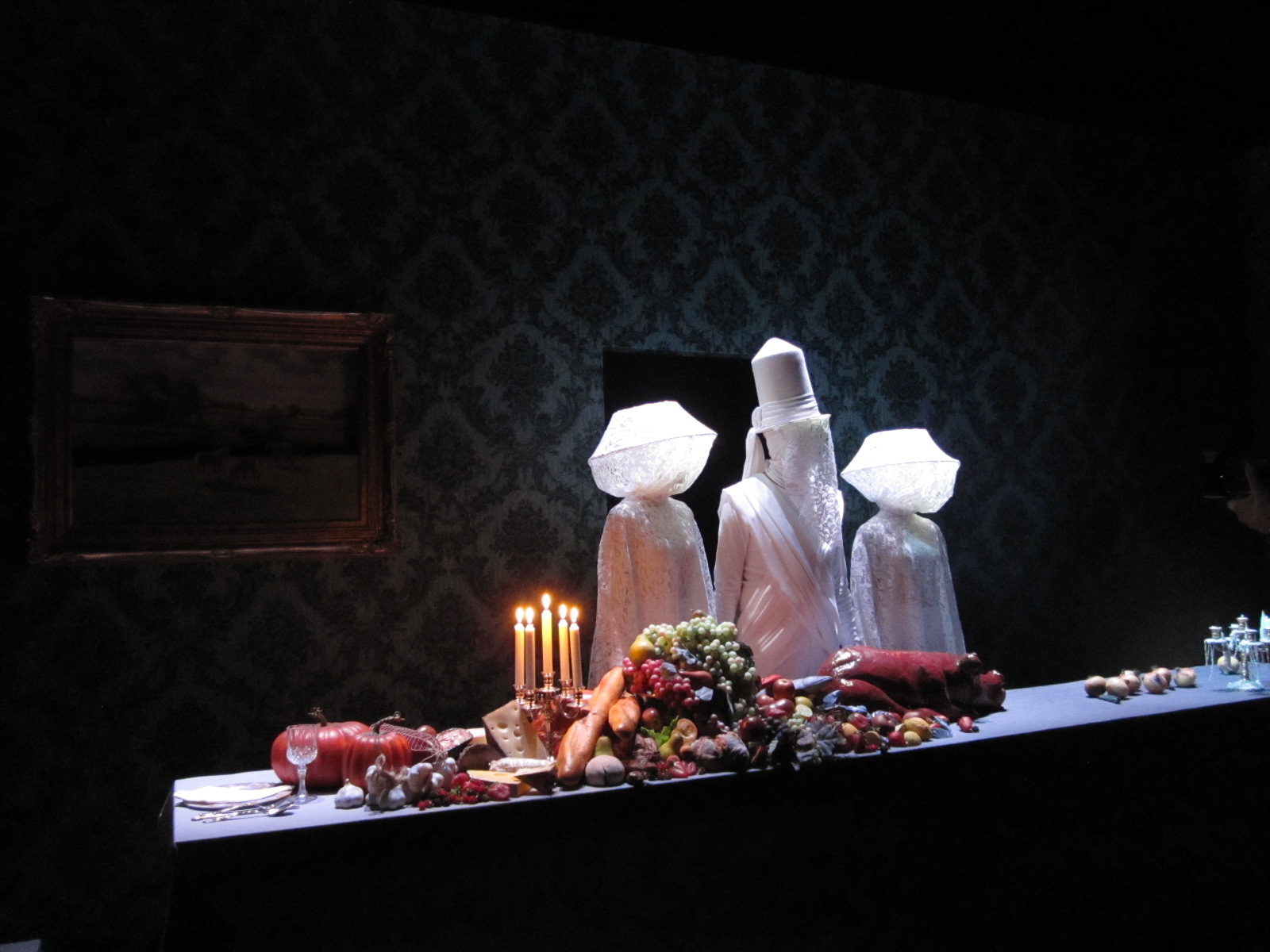
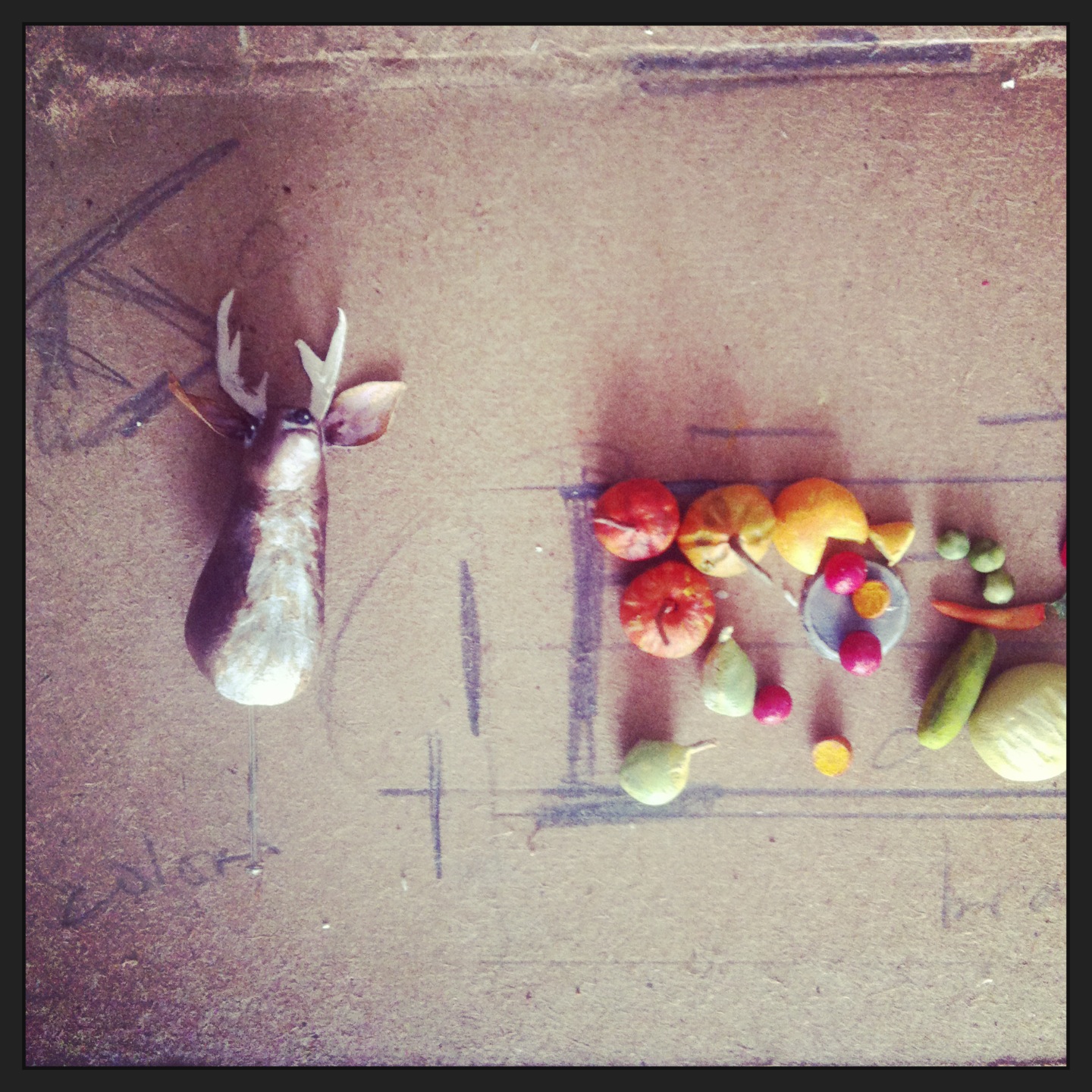
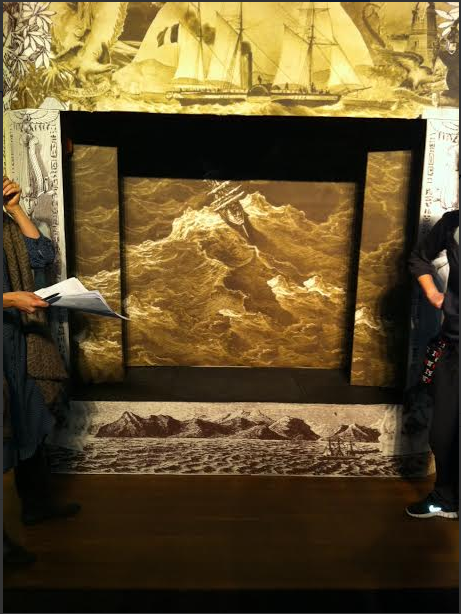
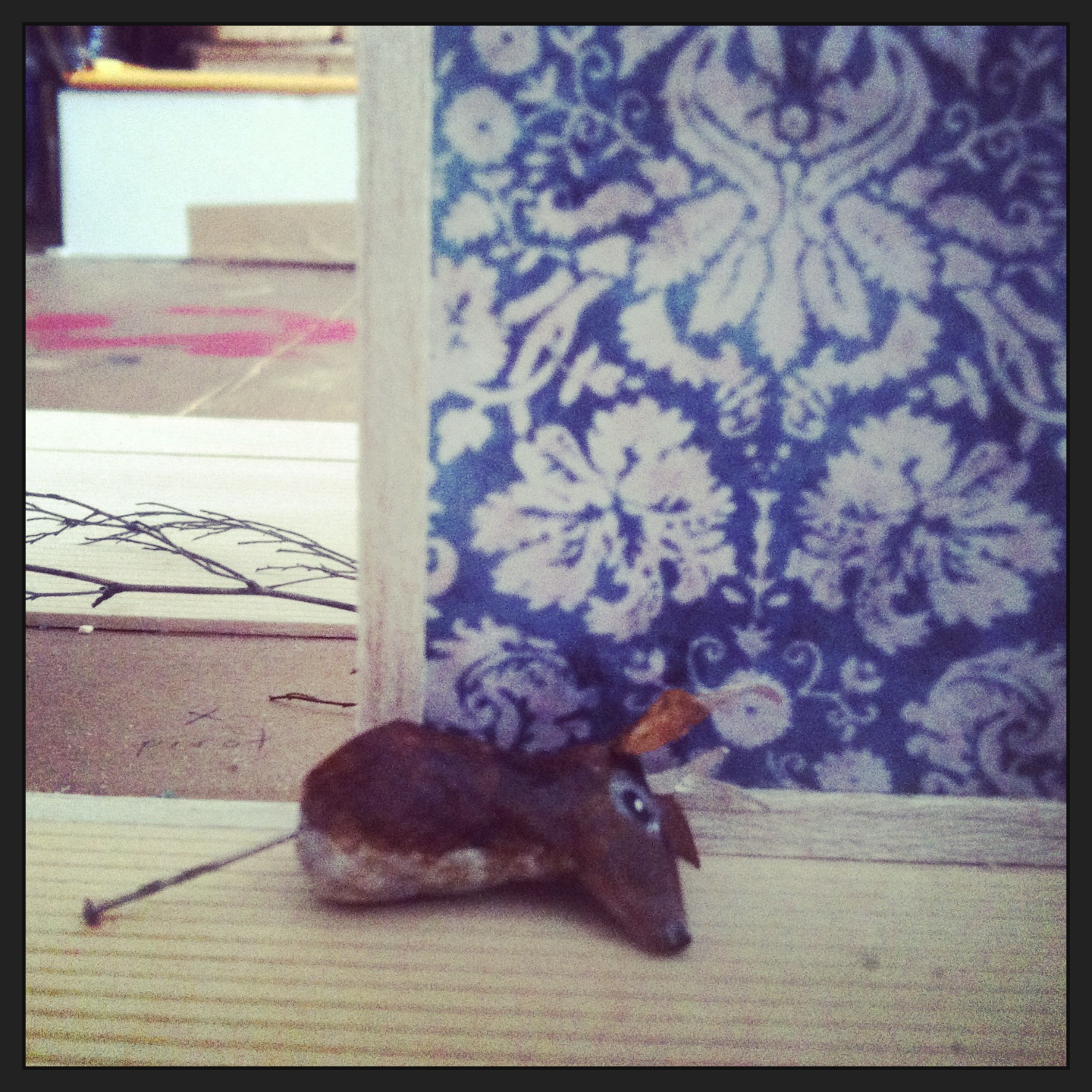
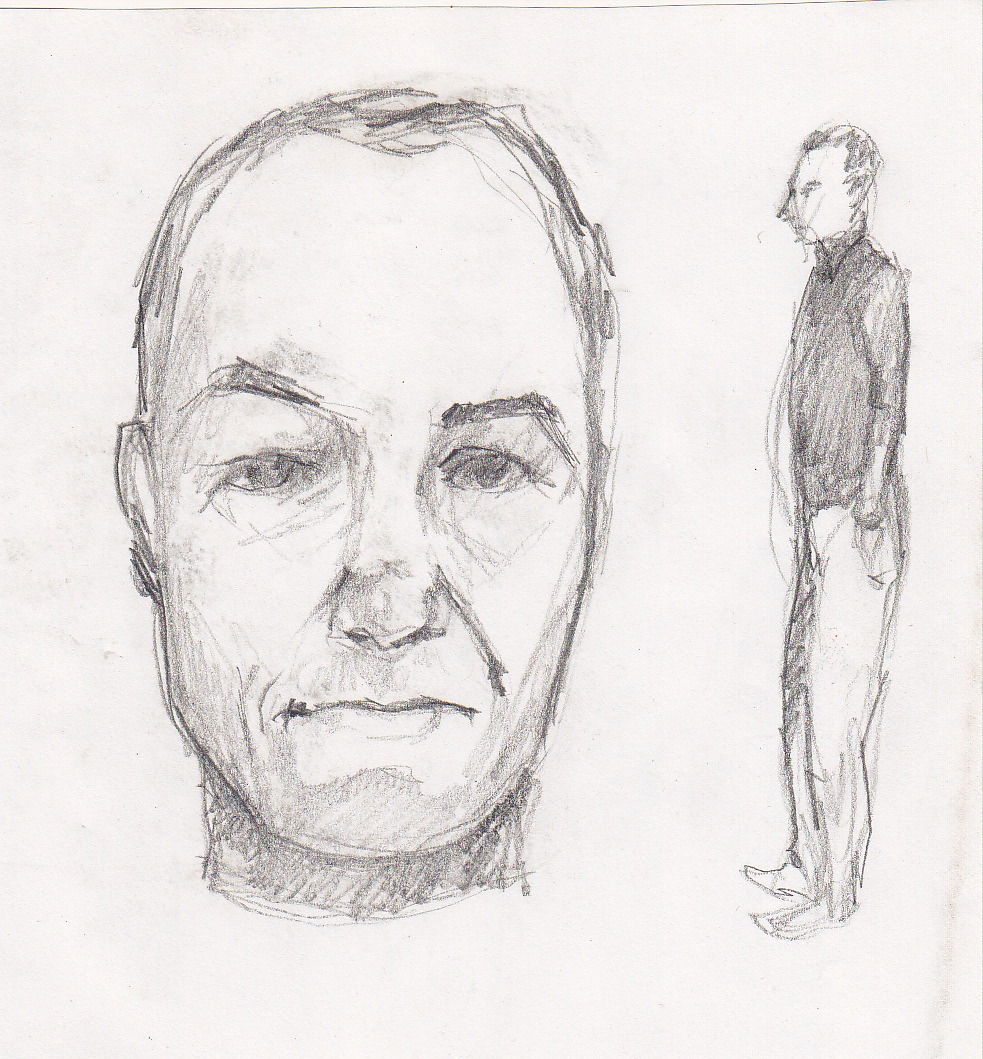
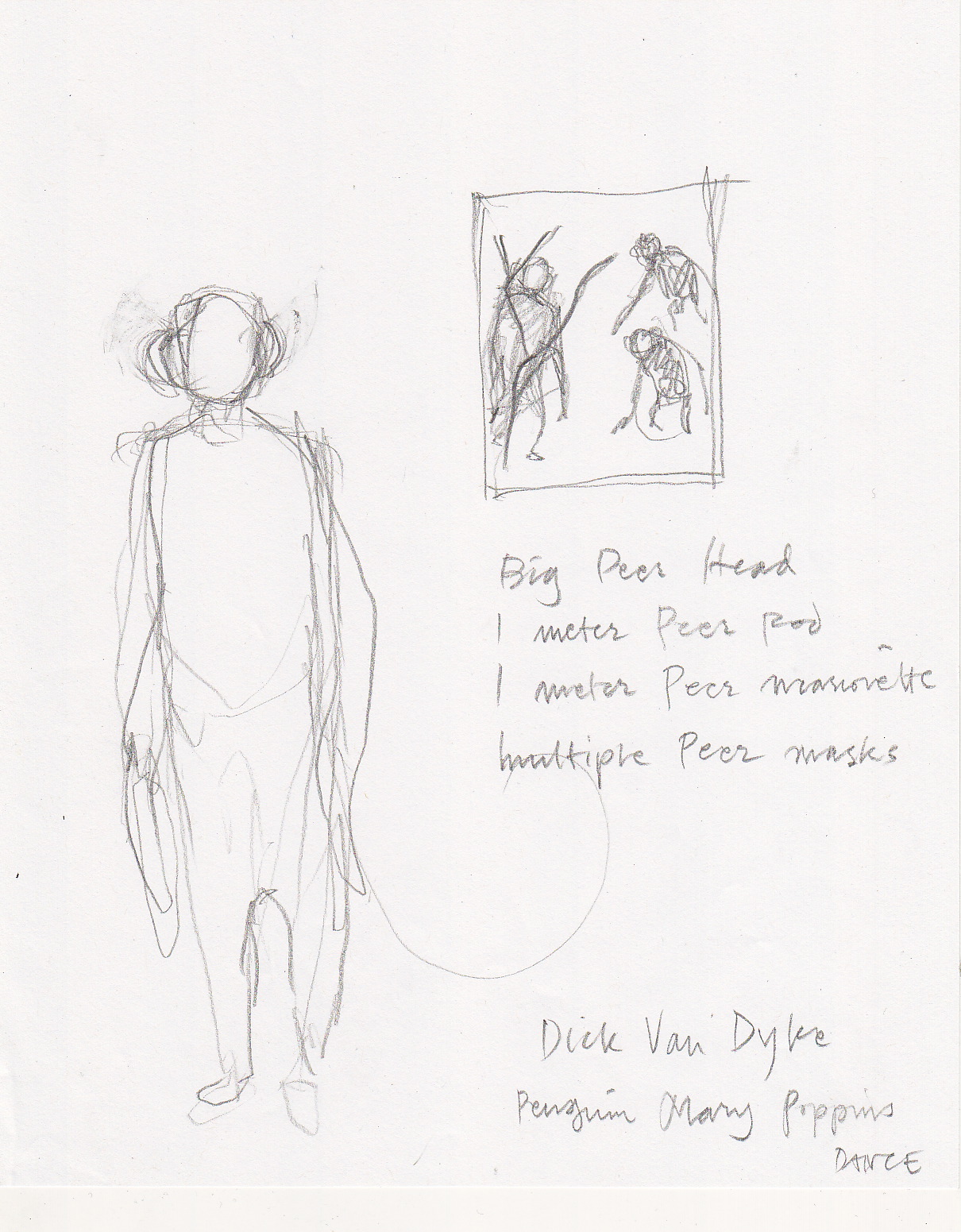
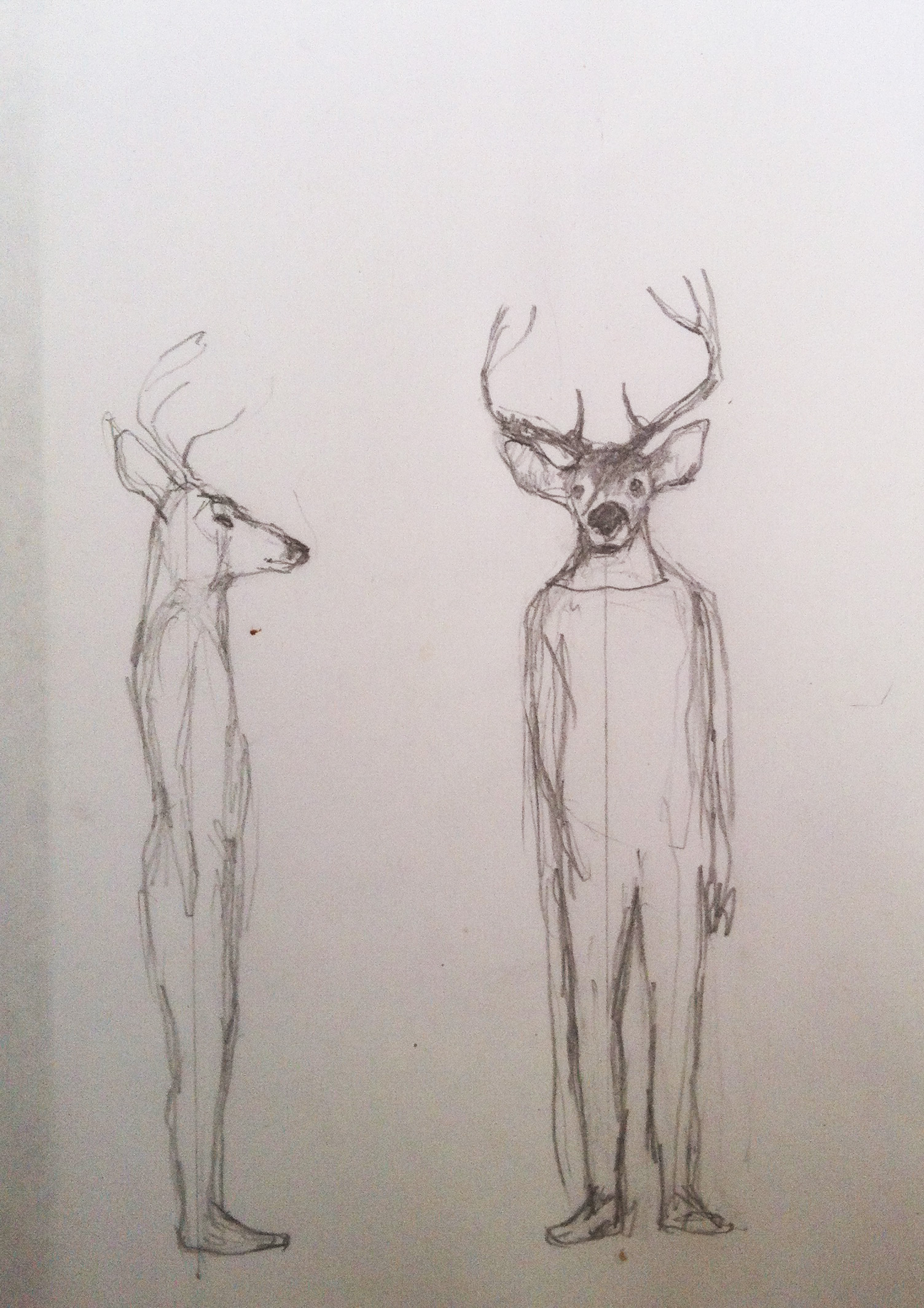
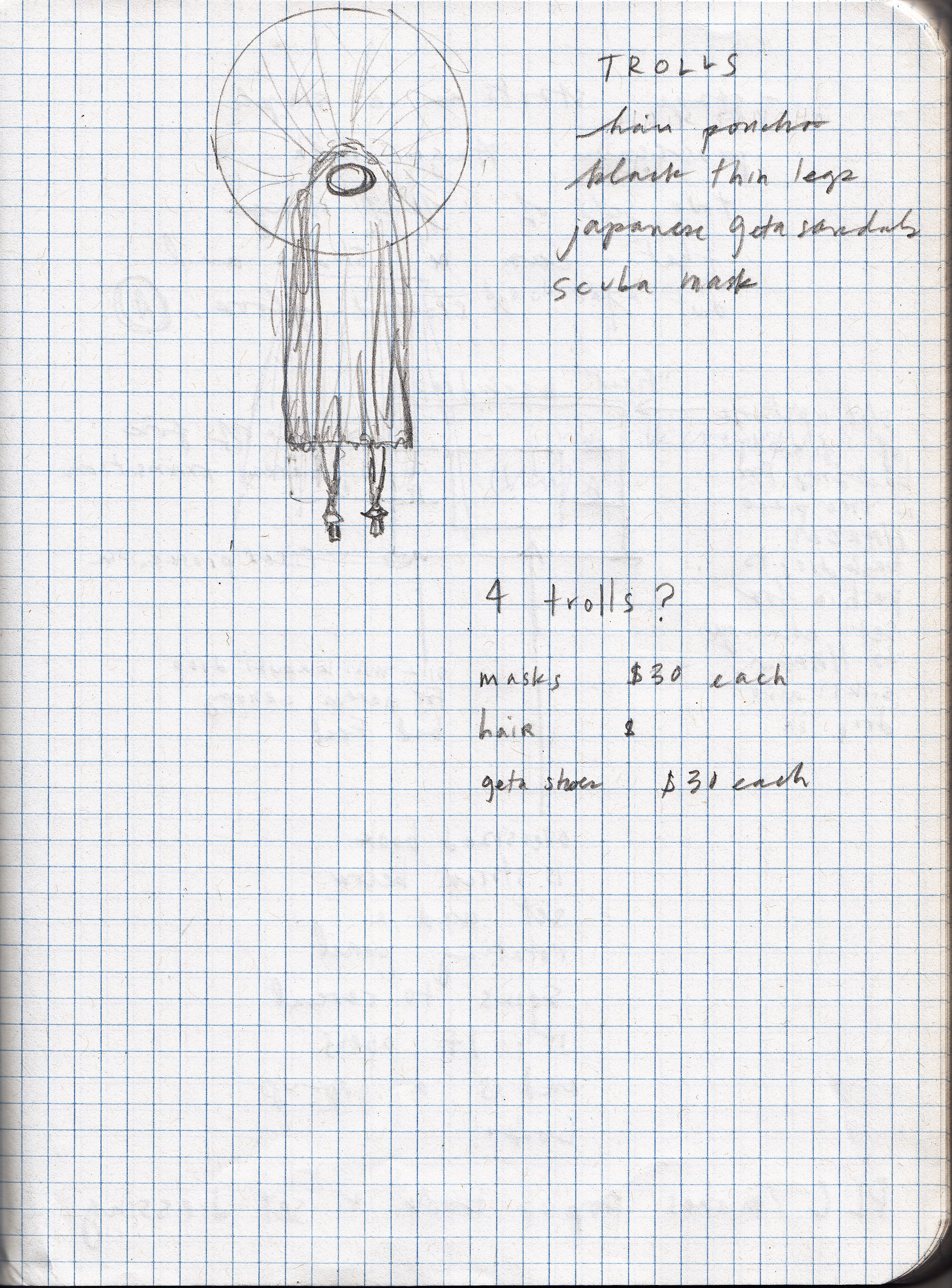
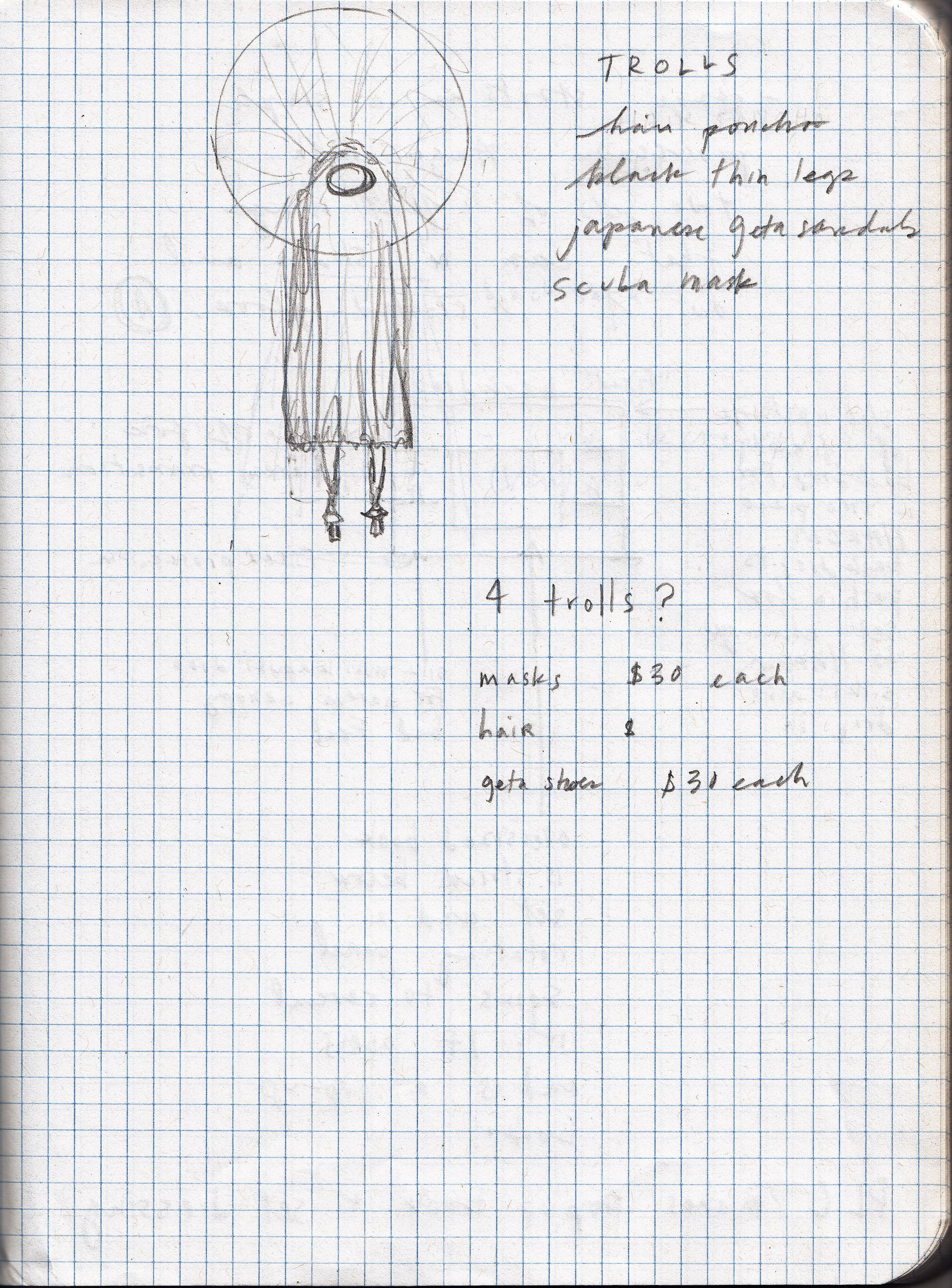
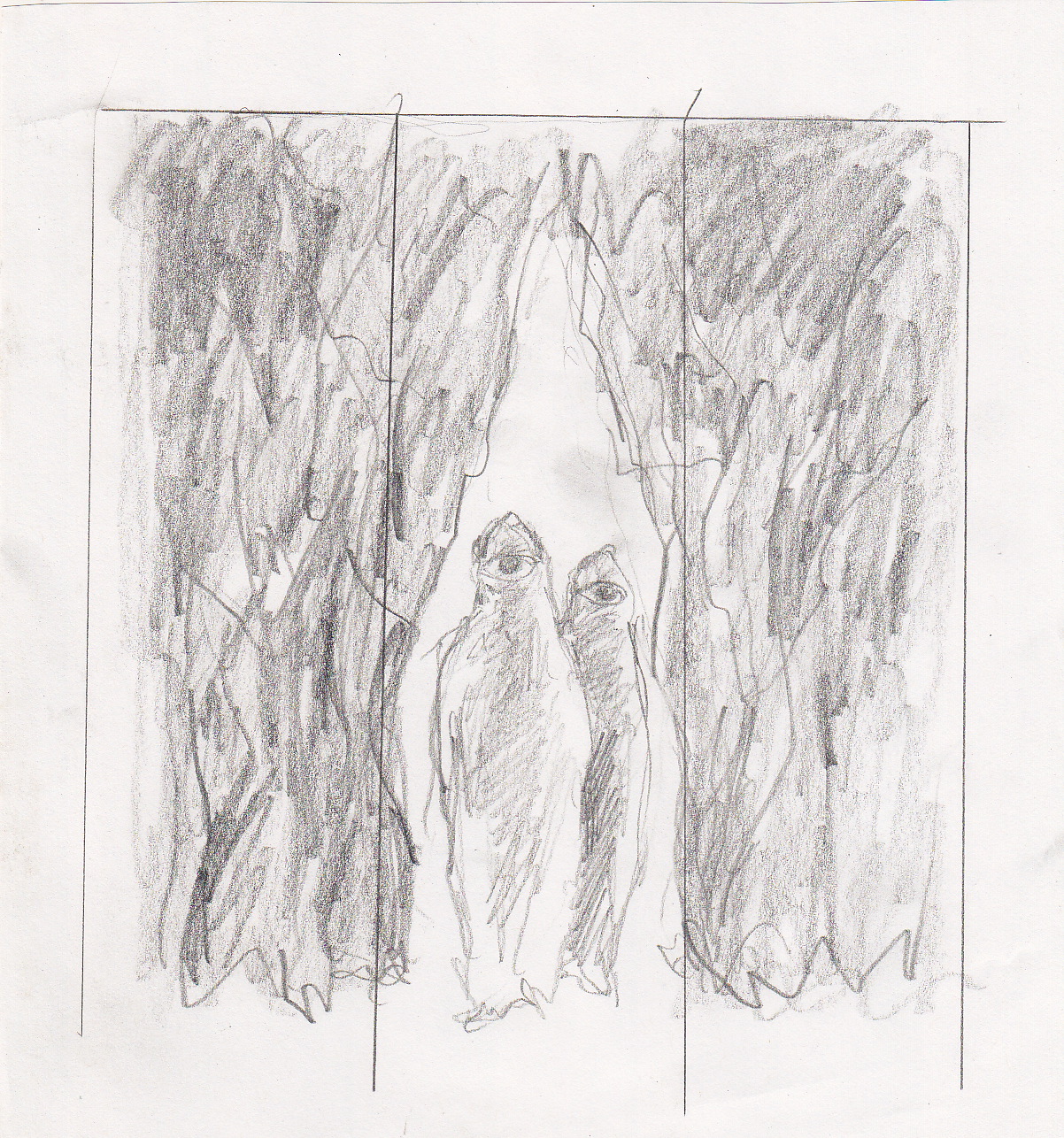
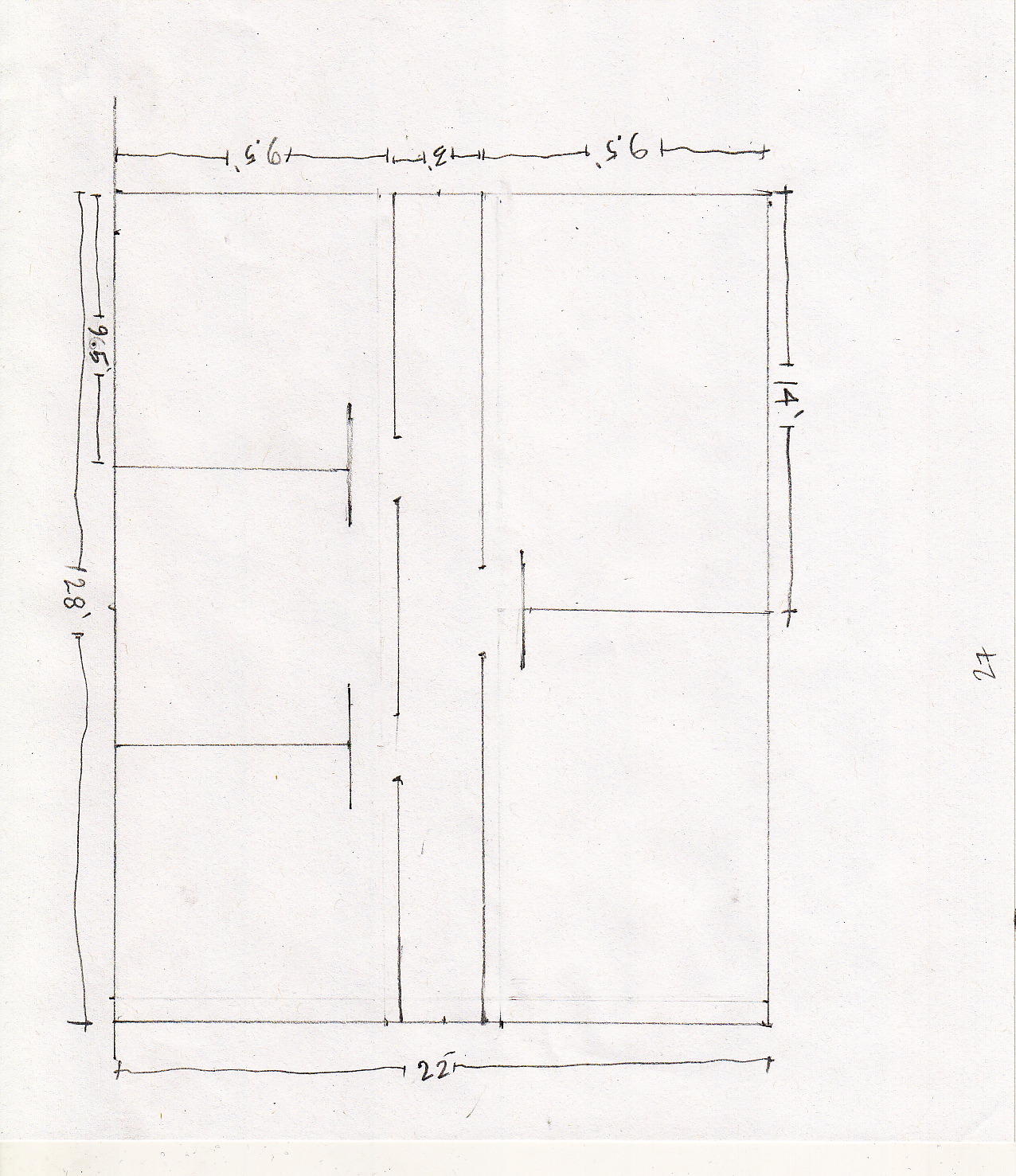
LEMONY SNICKET'S THE COMPOSER IS DEAD
Based on Victorian paper theatre, this set was comprised of 6 different scene changes all operated by rope and gear, a take on old stage craft scene changes, therefore turning the entire set into a giant puppet of its own. Puppeteers elevated on a 19’ steel bridge operated an orchestra of 35 4’ marionettes. Dancers ( 4-sided paper toys) pirouetted across the stage in a grooved gear running through out. Paper chandeliers, pop-up tomb stones, floating birds and more were all apart of this surprising but ultimately old world stage craft play.
THE COMPOSER IS DEAD

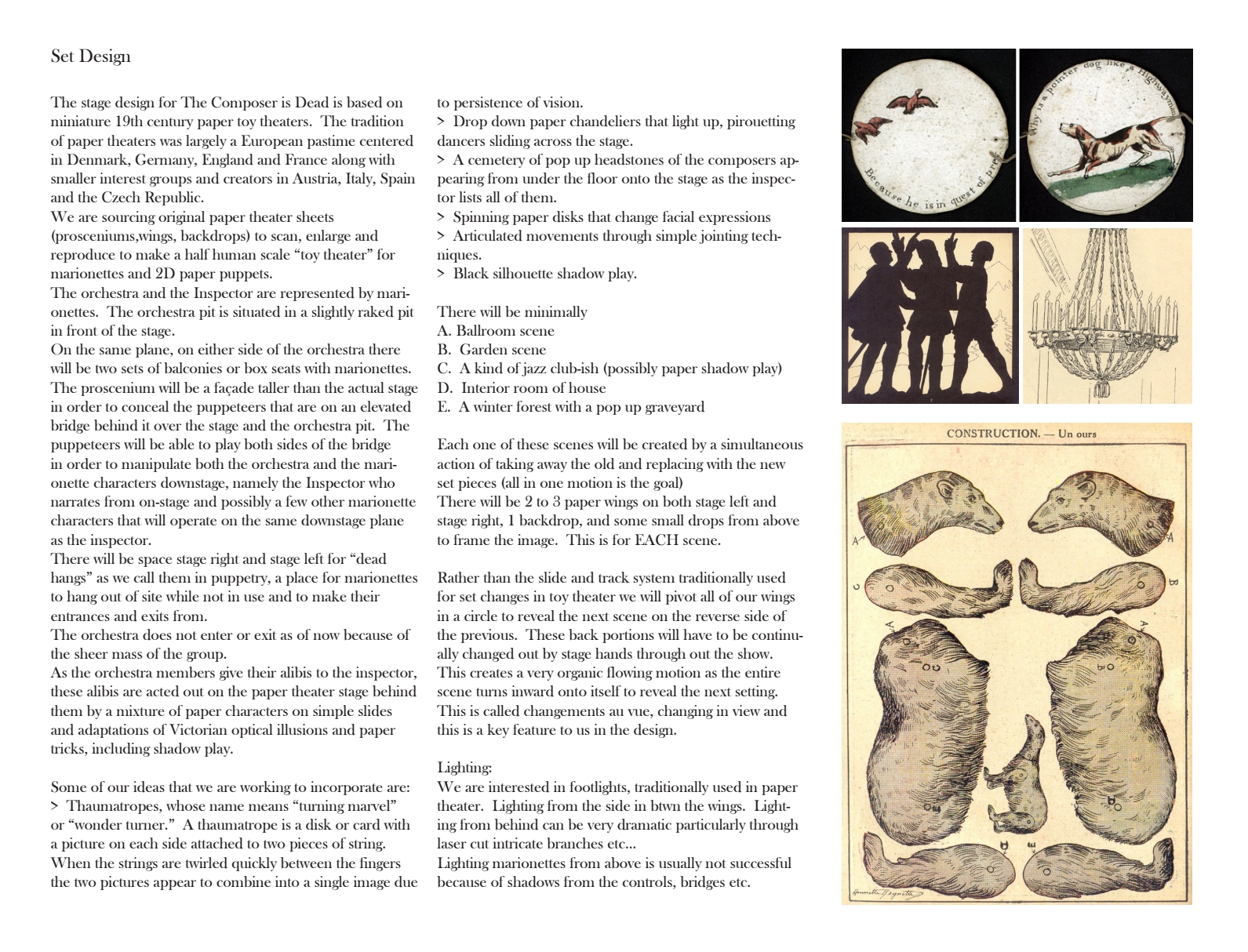
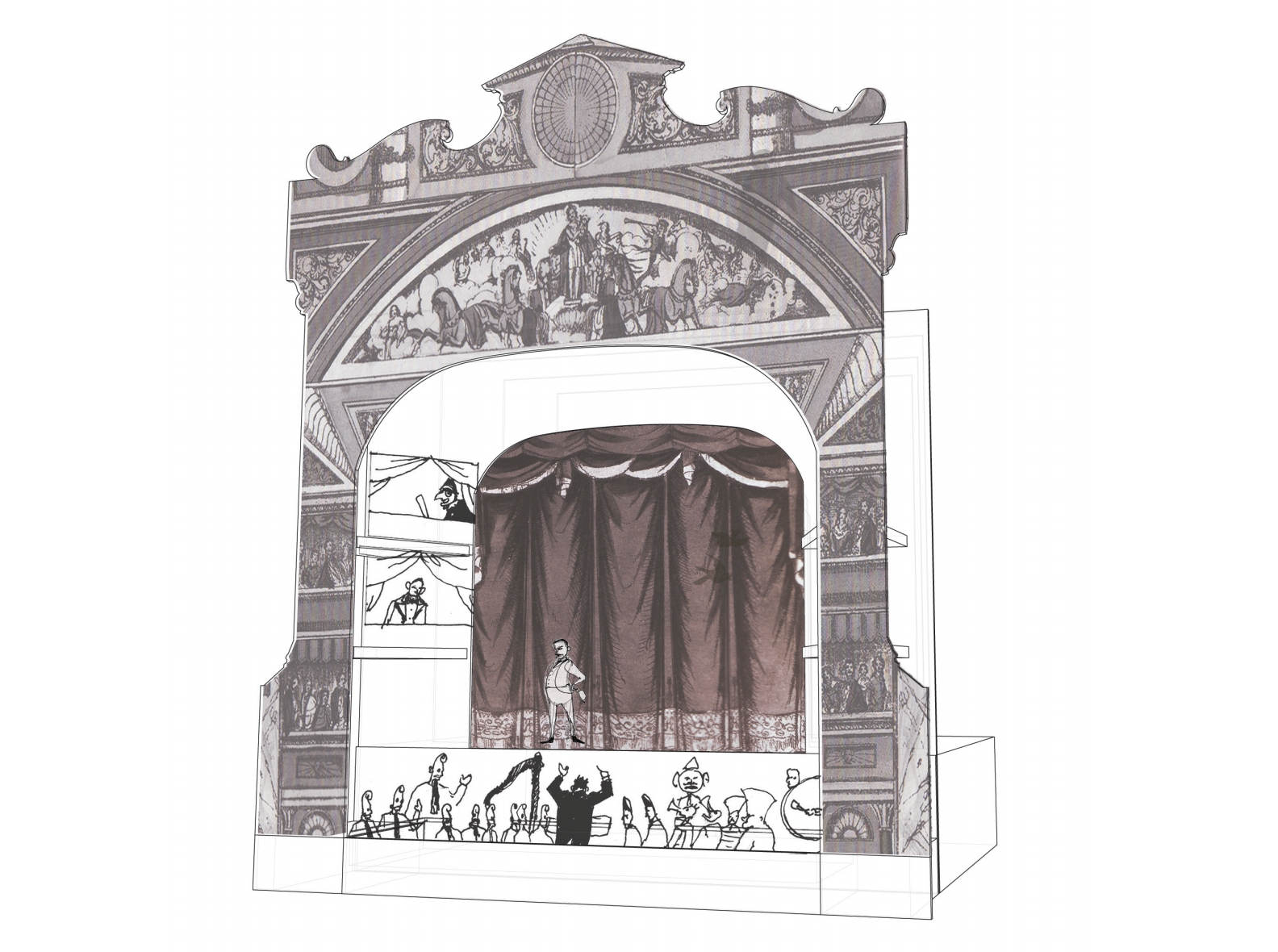
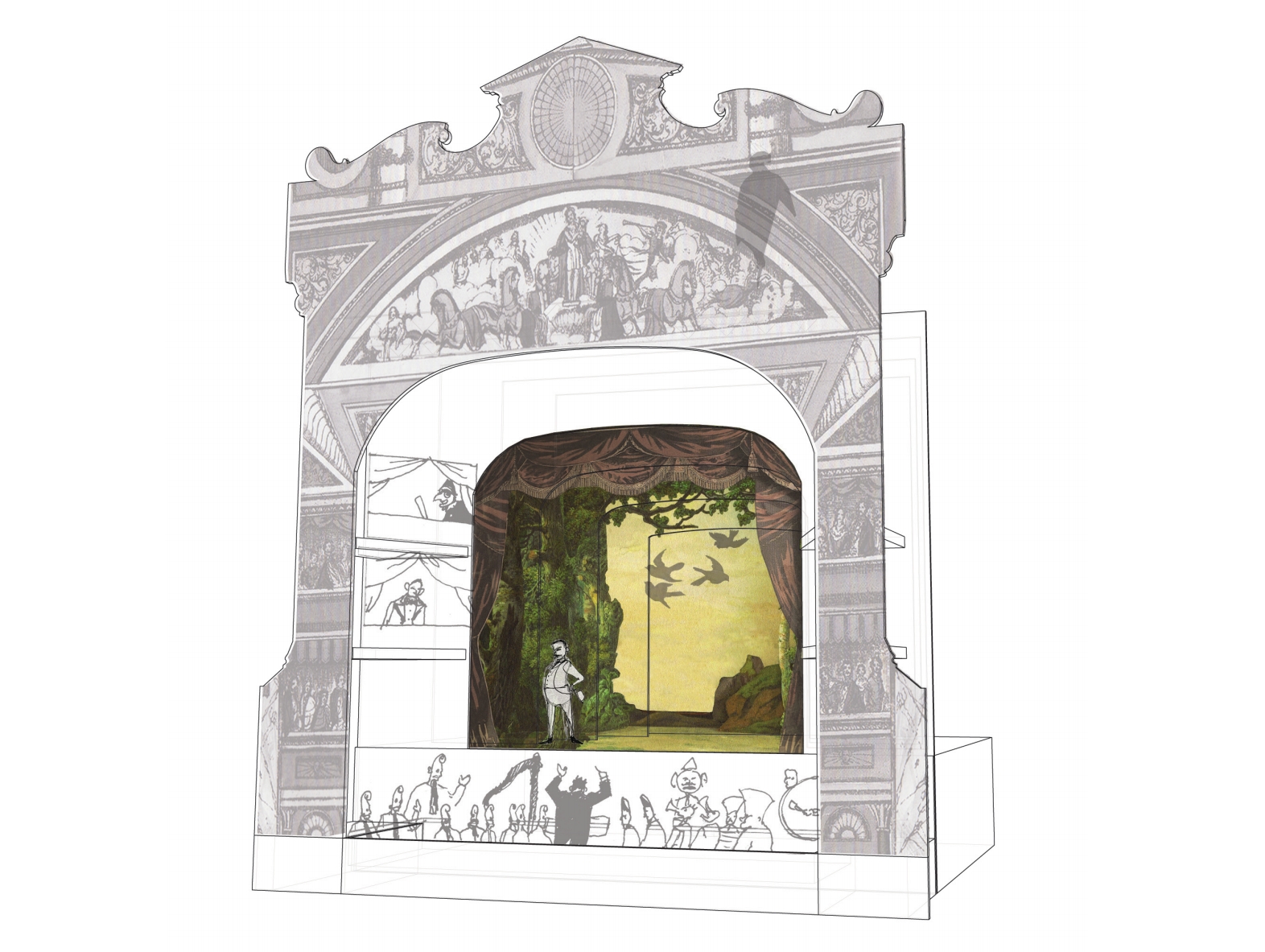
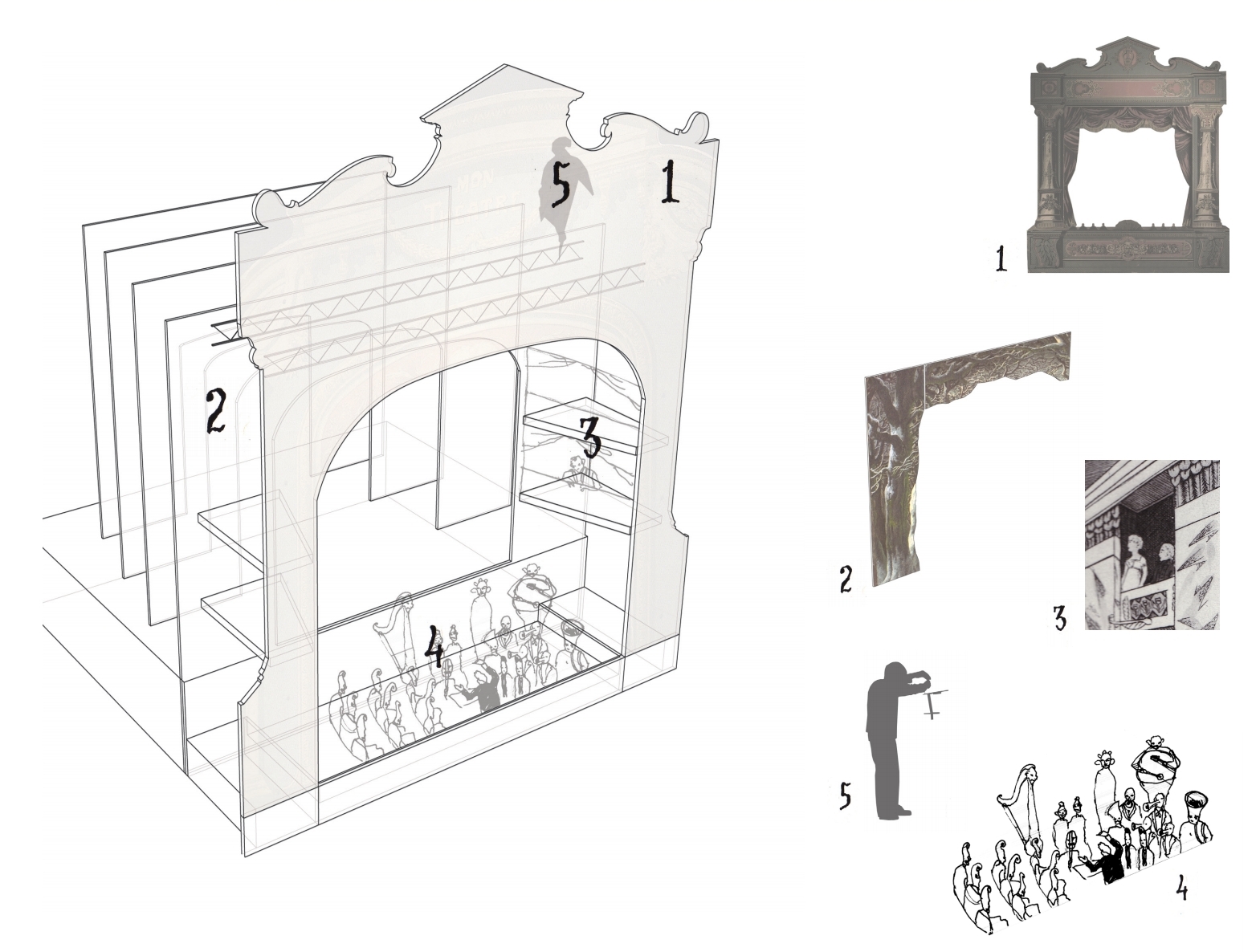



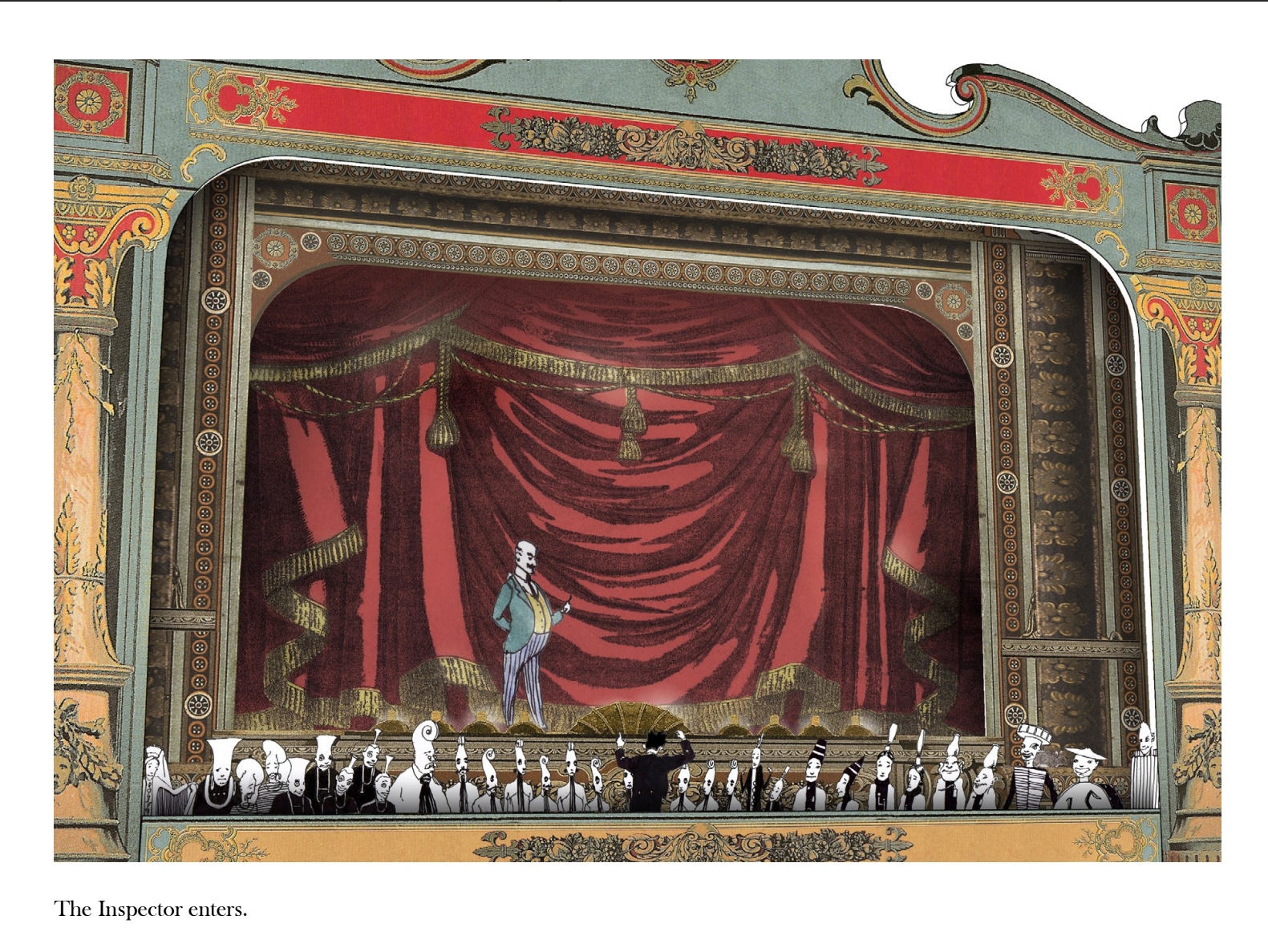
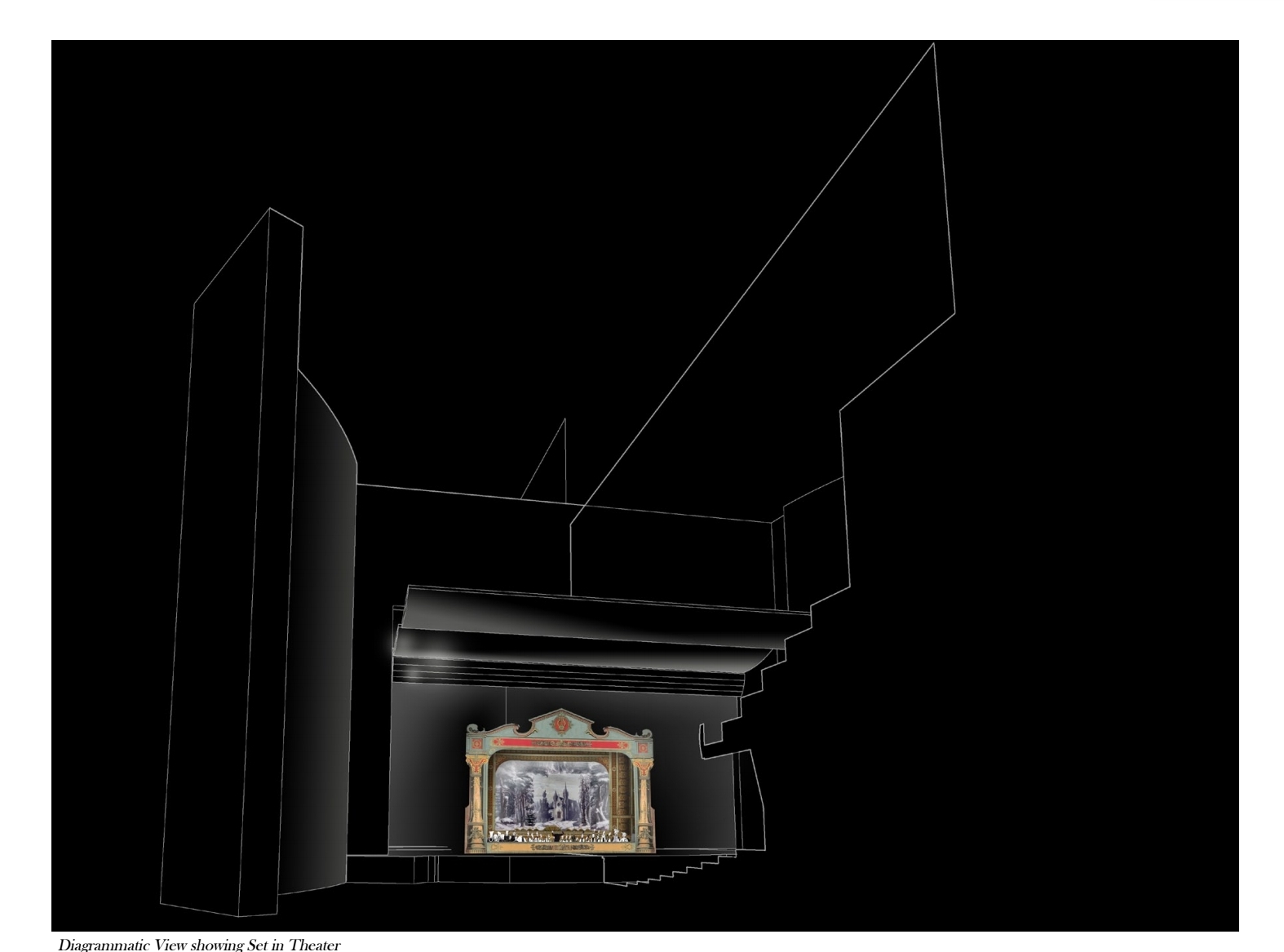
THE DEVIL YOU KNOW
The world of The Devil You Know was 2 double-sided houses with an infinite ability to change sets, as the pieces rotated. A channel in the center of each house provided space for 3-4 marionette operators to puppeteer. The concept for the design is that each house would be comprised of a homemade 3D paper collage version of a photograph. We went through old New England and photographed period houses and barns, then took each individual board and shingle from the photographs. We printed them and then attached them to cut out boards and individual shingles and doors and windows to make what seemed to be a historical photo come alive - or jump from the page.
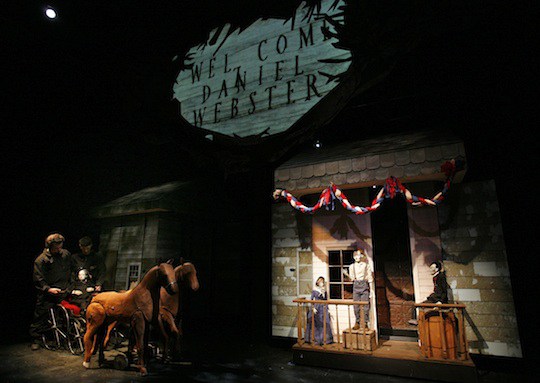

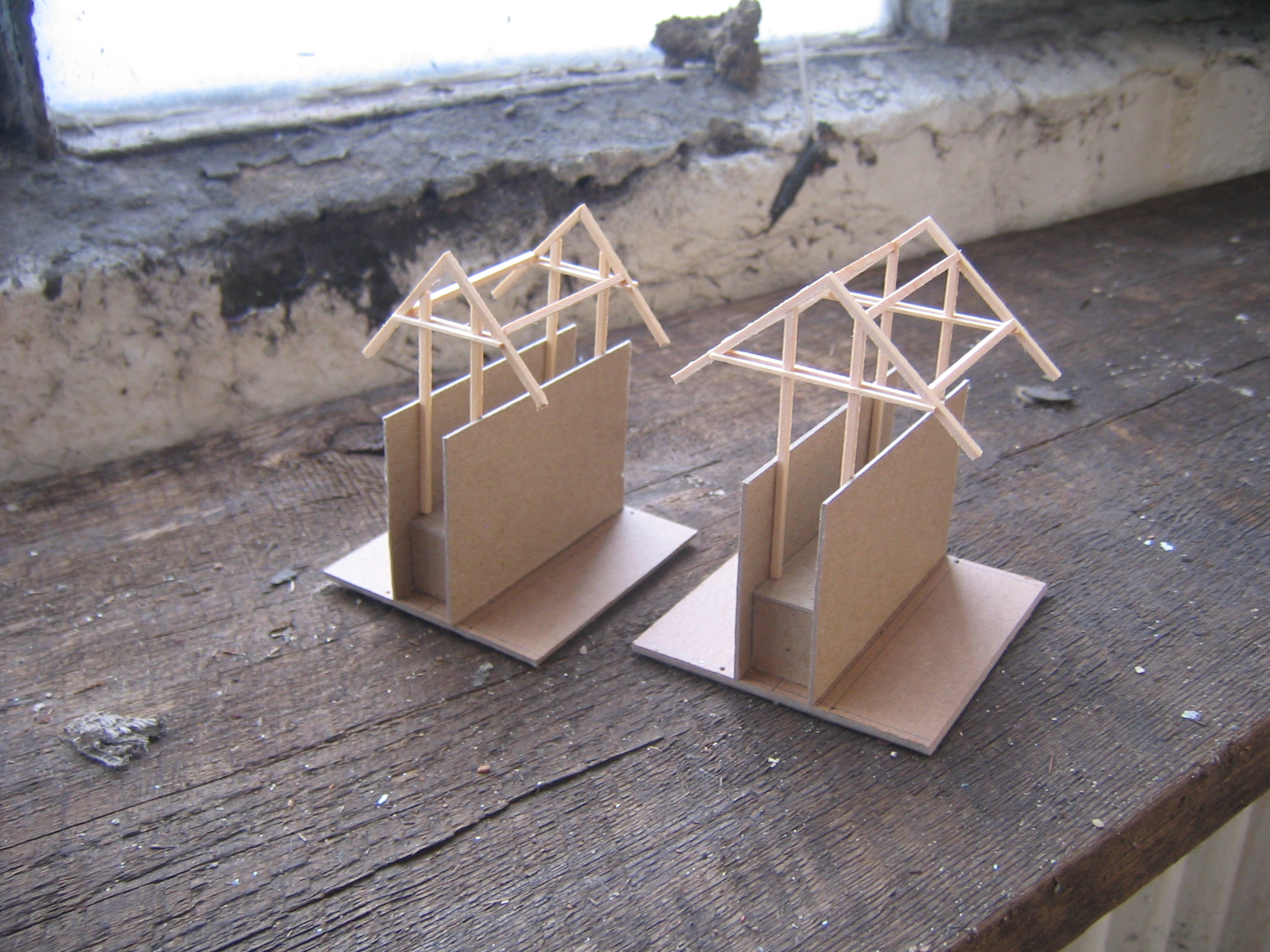
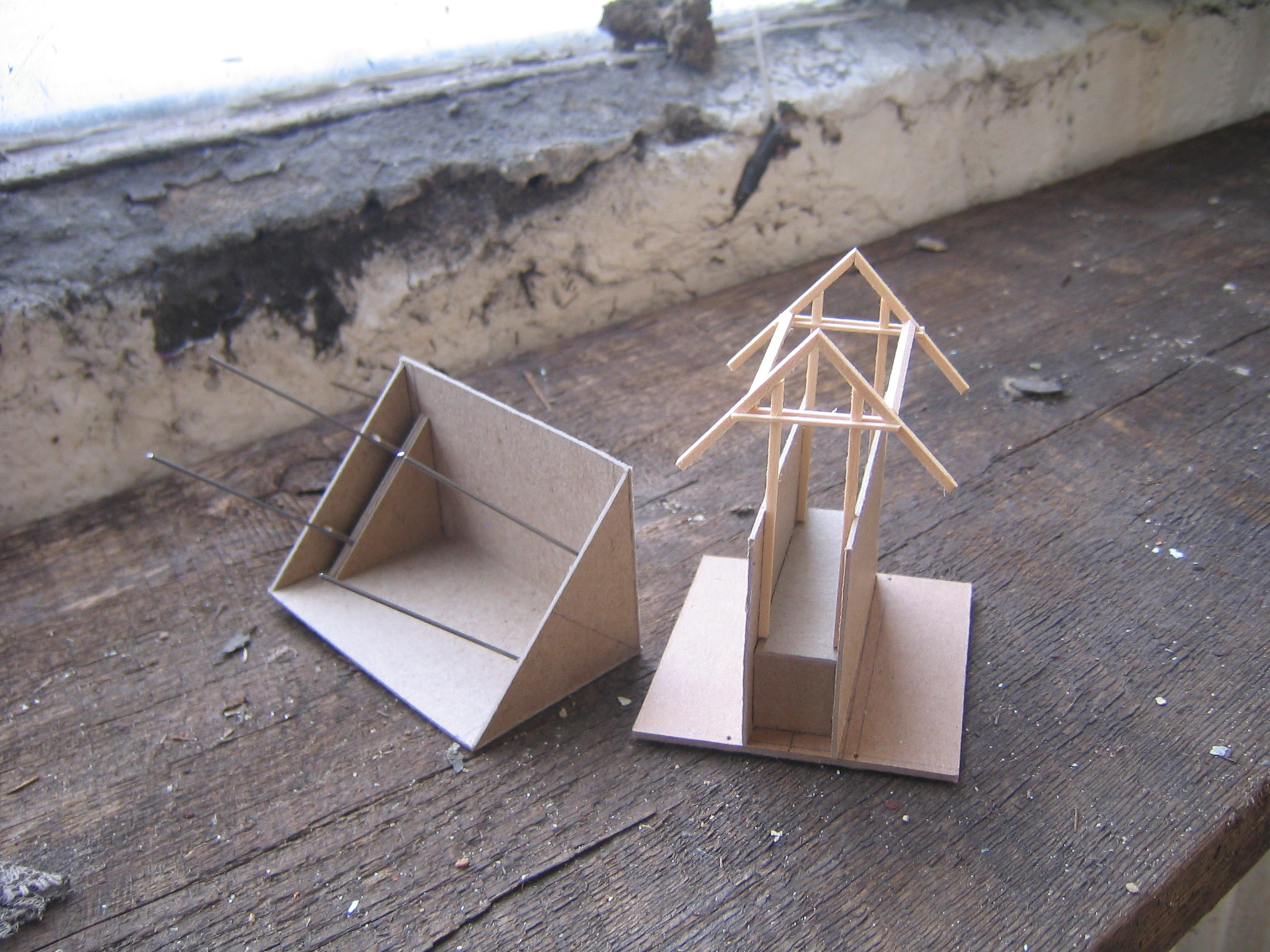
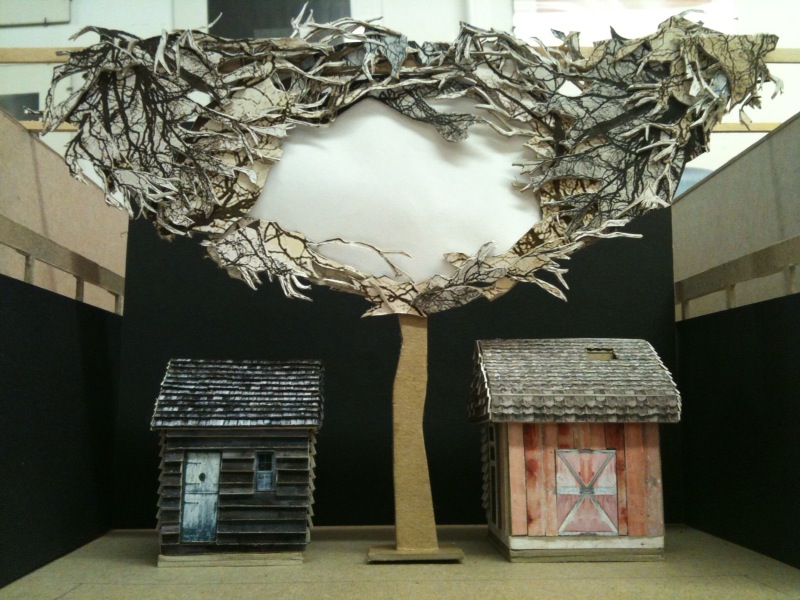
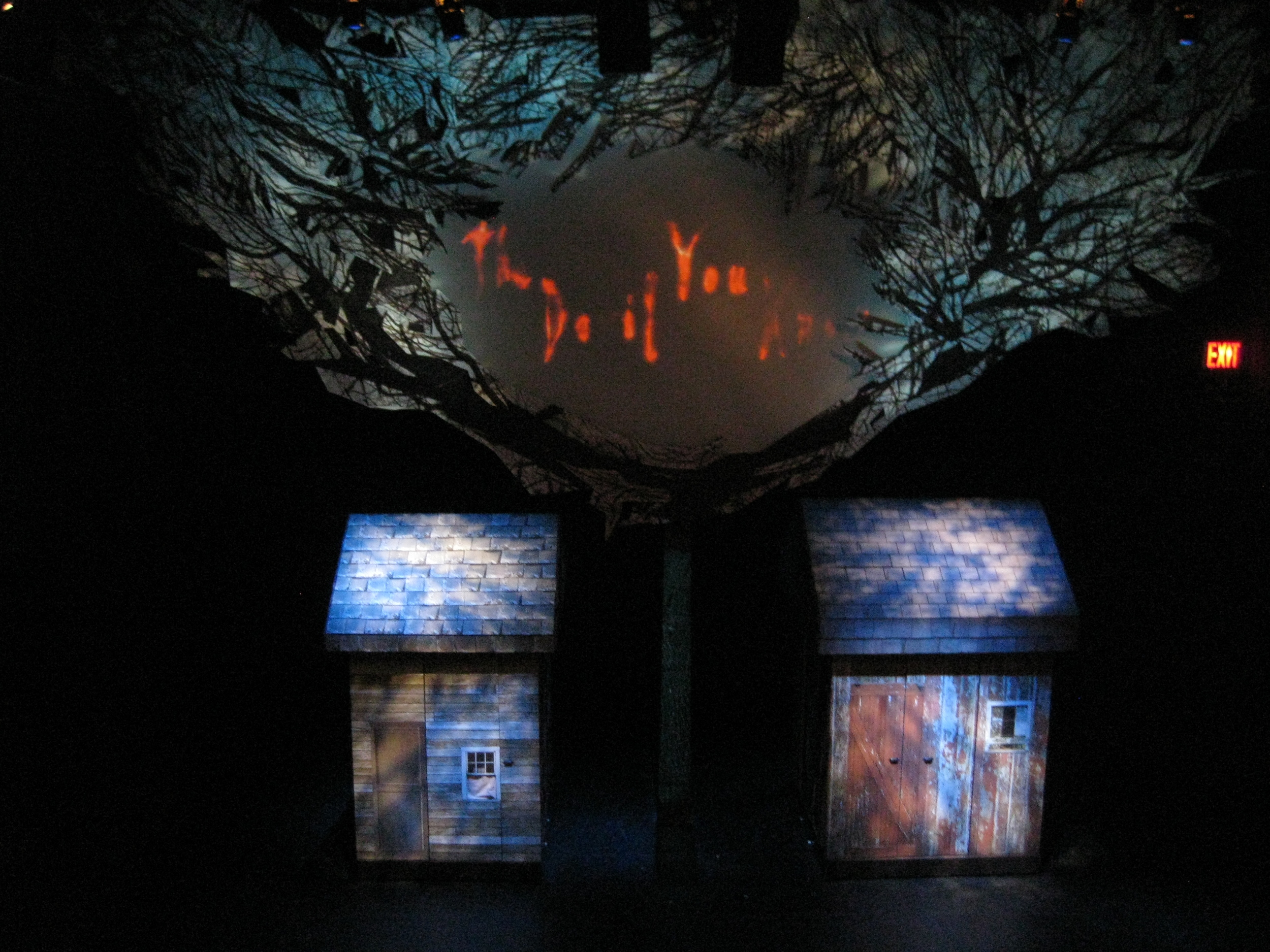
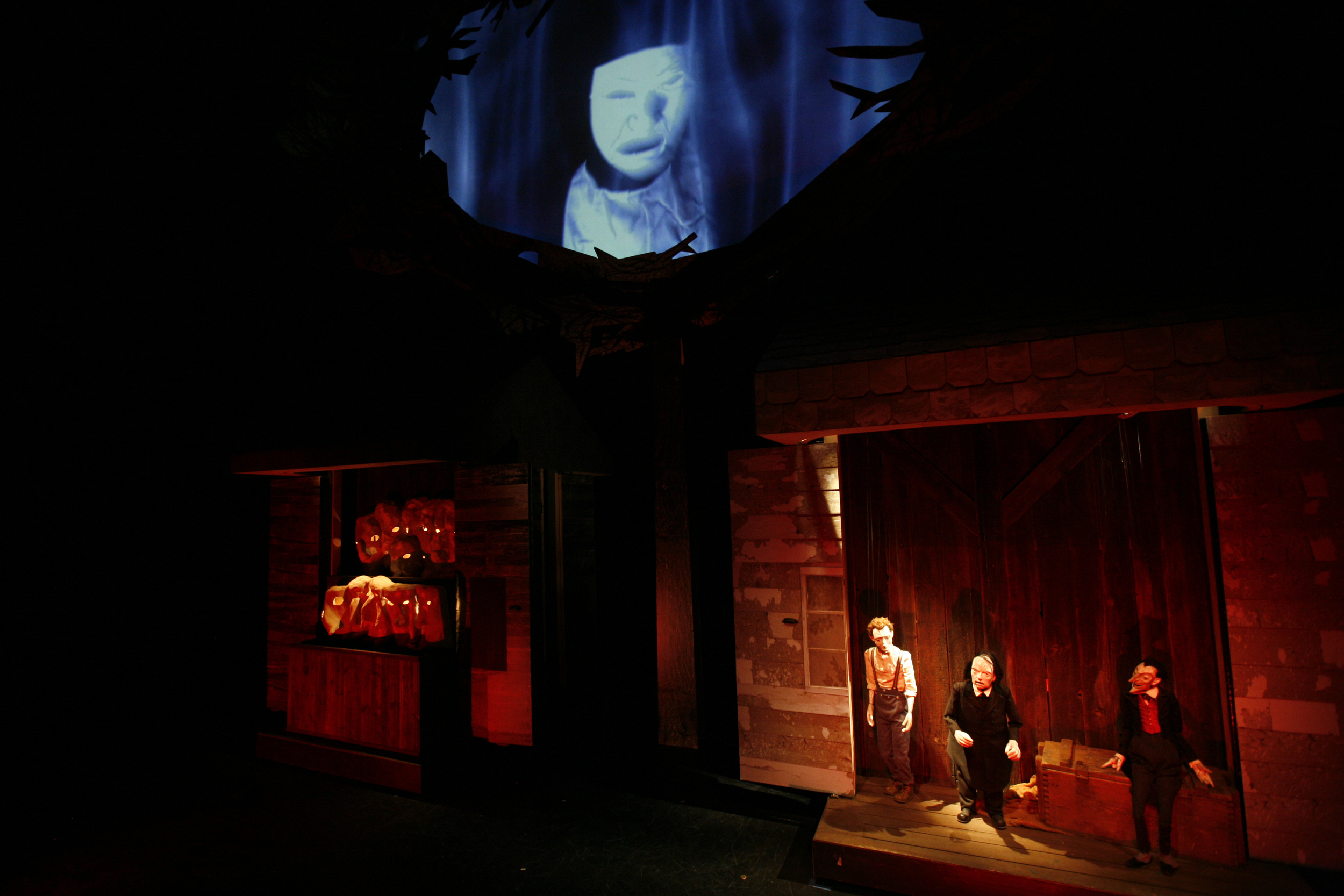
DEAR MME.
Based on a 6” maquette of a puppet by Erik Sanko, titled the writer with doors within it’s chest, Jessica was inspired to enlarge this piece to 15’ tall, making the character of the writer functional but also having a stage inside of the “heart” of the puppet. As a kind of Trojan Horse the puppet contained the puppeteers and as the Kronos Quartet played Erik Sanko’s original composition the large puppet of the writer wrote them and smaller marionettes played out the scenes within the larger puppet’s chest. There was a video camera aimed on the central action which was small scale and it was projected on a large scrim above the Kronos Quartet’s performance.

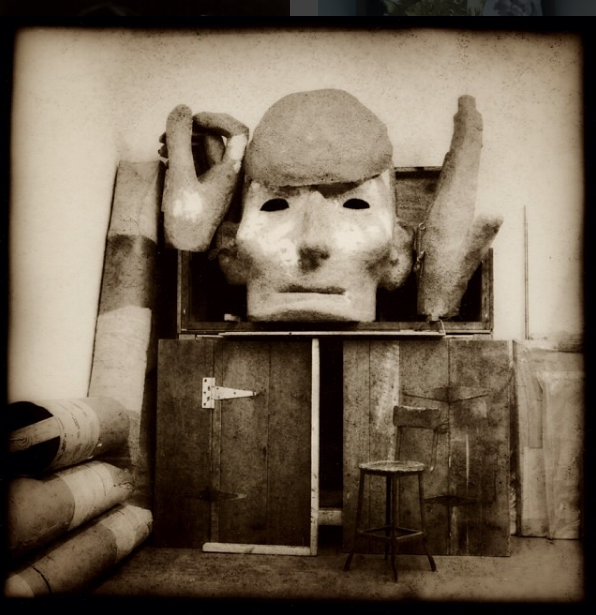
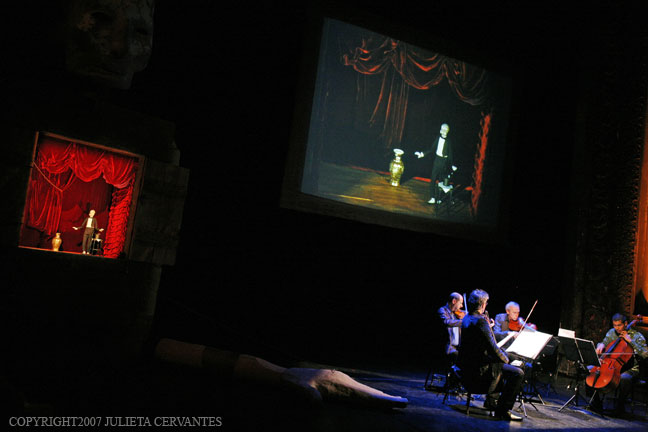
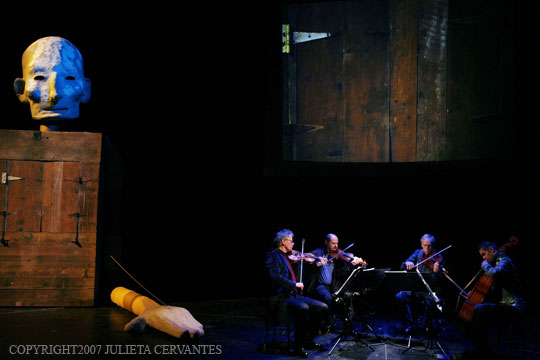
THE FORTUNE TELLER
The Fortune Teller was Jessica’s first faure into set design. The outer structure created by architect Selin Maner was a mansion with portals that pushed and pulled to expand and contract the building revealing rooms and scenes within as well as shadow-play in all of the windows.
Jessica designed the interior sets which were critically praised, launching her career as a set designer. Every detail of this 1/3 scale Edwardian was considered, from custom created wallpaper with hidden messages to homemade telescopes and libraries. The craftsmanship was crowd sourced from Grindstaff’s ever talented pool of friends in the NY area.
Video created and provided by Liam Hurley
SPEAKING IN TONGUES | COPENHAGEN, 2007
Based on the illustrations of Charles Darwin’s grandfather of the venus fly trap, Jessica created a custom wallpaper that completely wrapped the room including the floor, turning the room into both a petrie dish and a dollhouse set with no entrances or exits. Furniture all painted white and labeled with their names. Scene numbers notated by custom neon signs a the top of the set and costumes all custom made and dyed for each characters, Speaking in Tongues was a thorough expression of a weaving of conflict and characters in a confined and all encompassing space.


